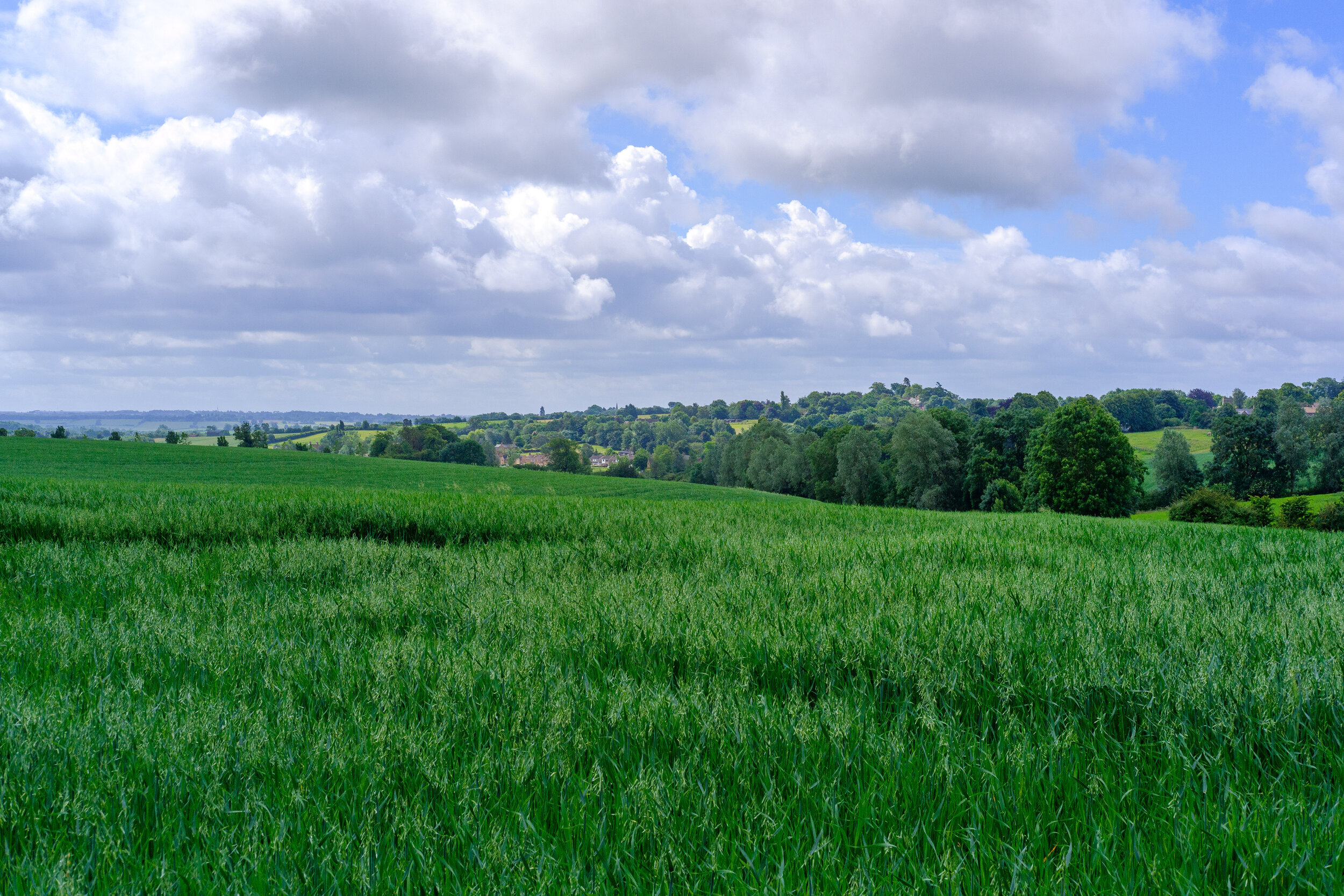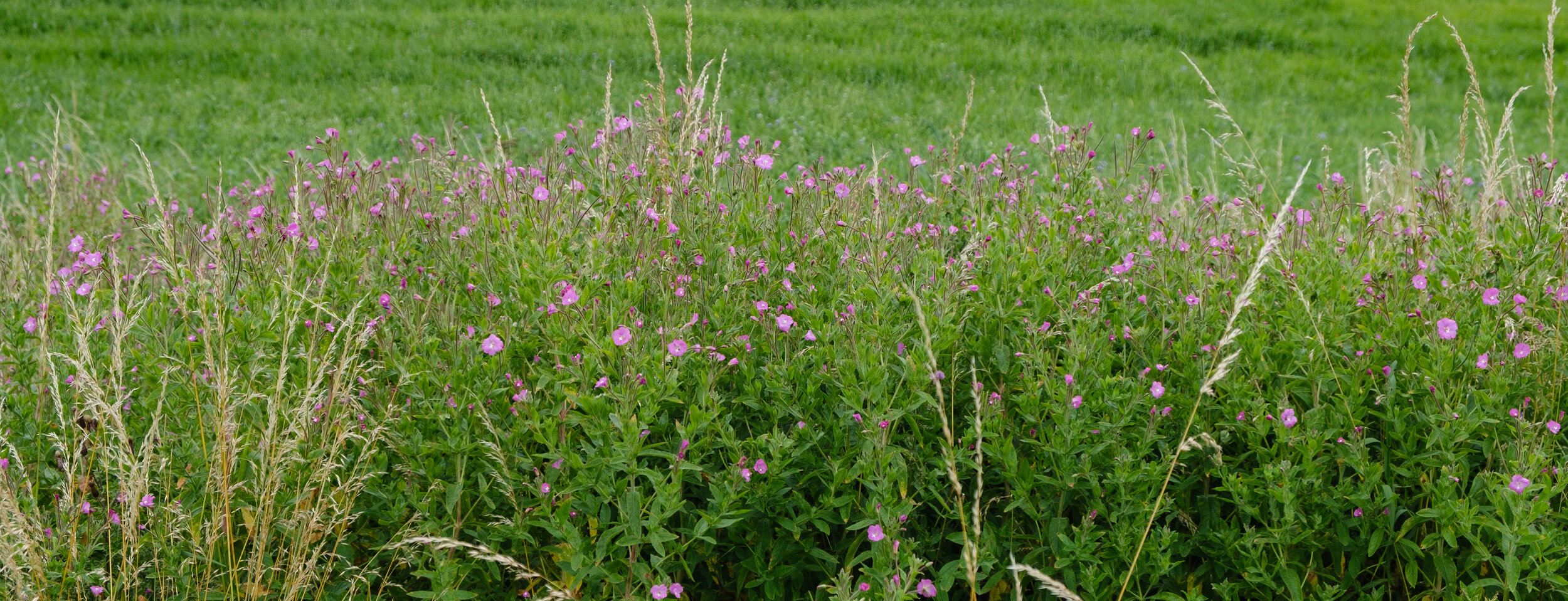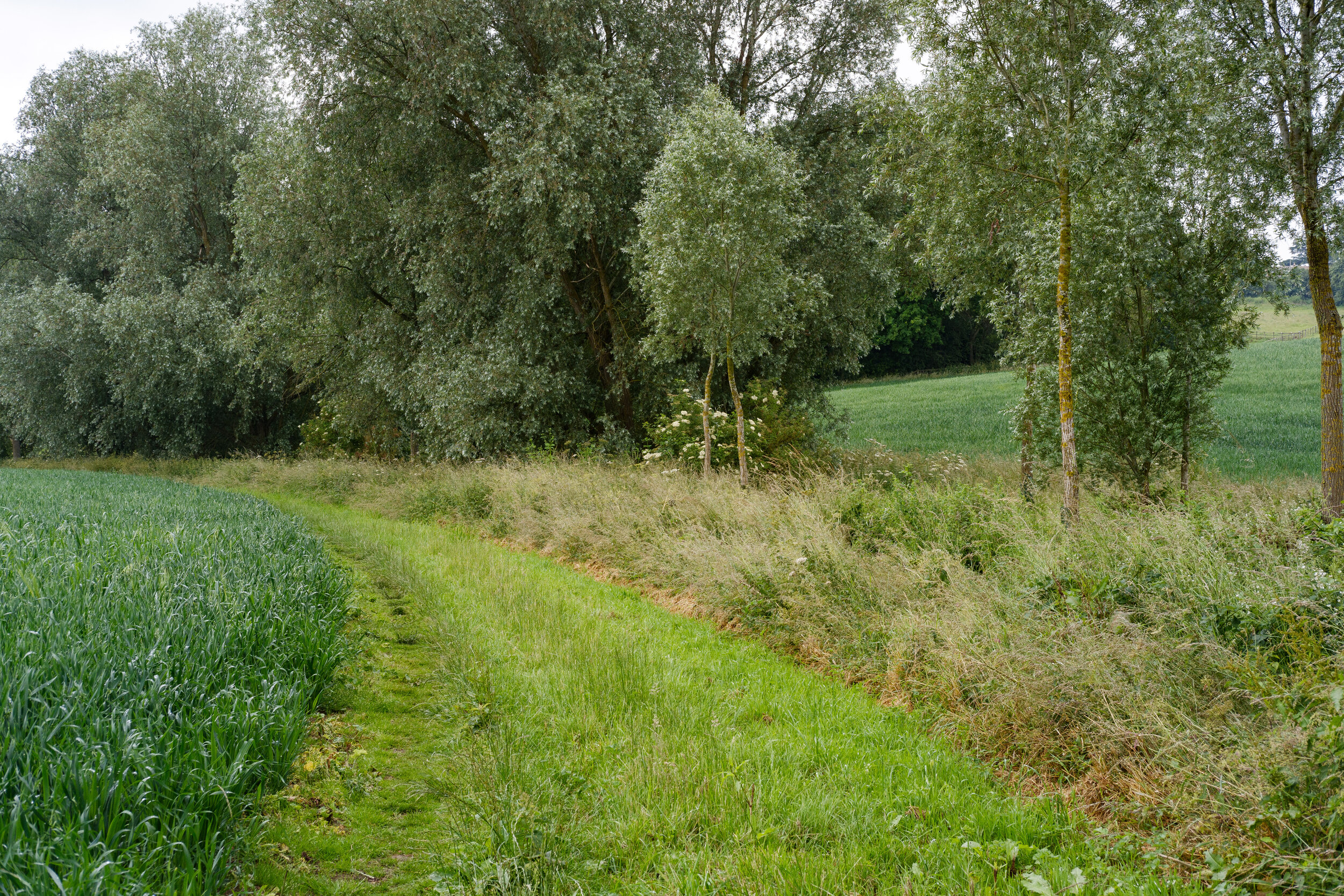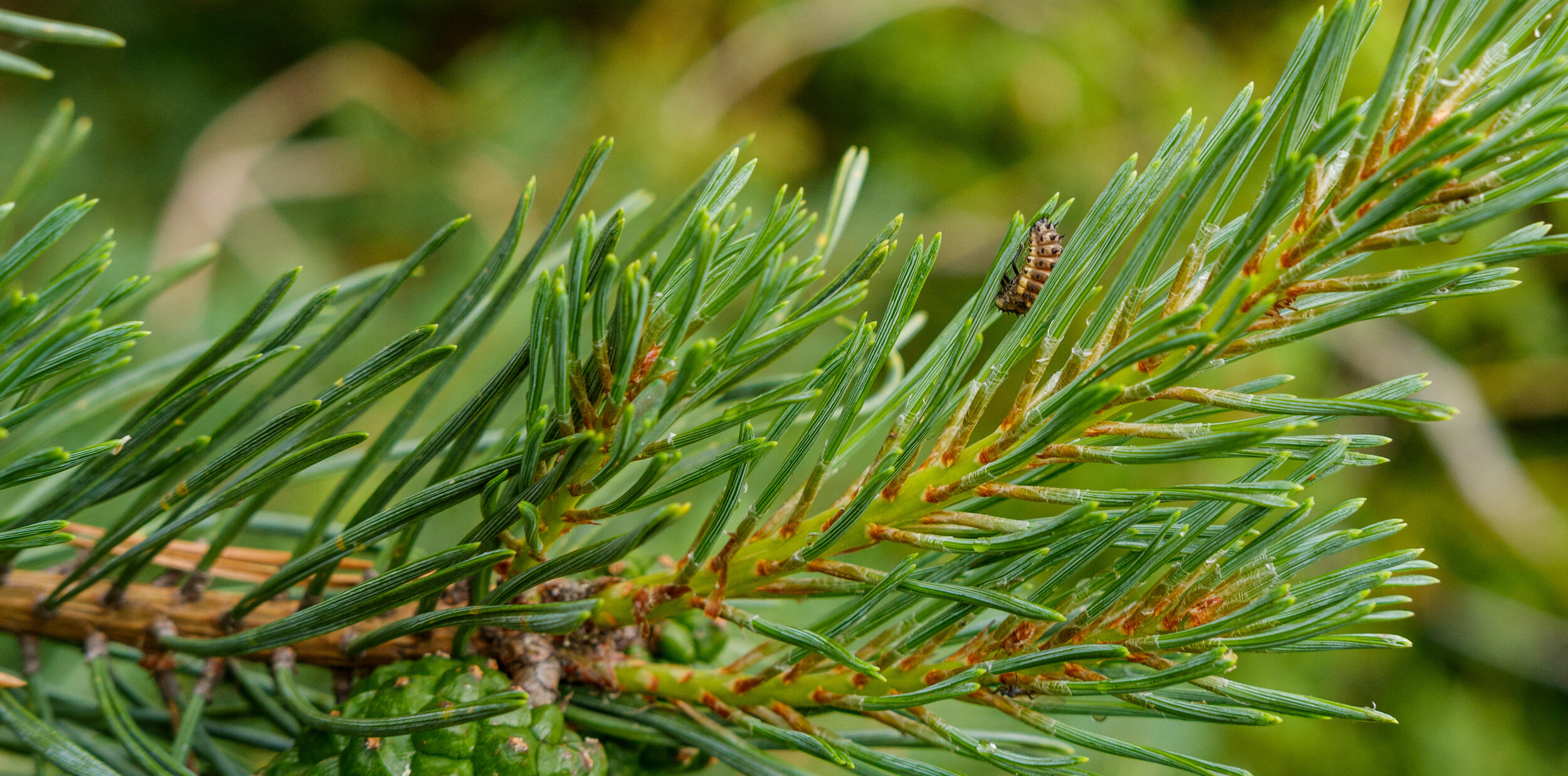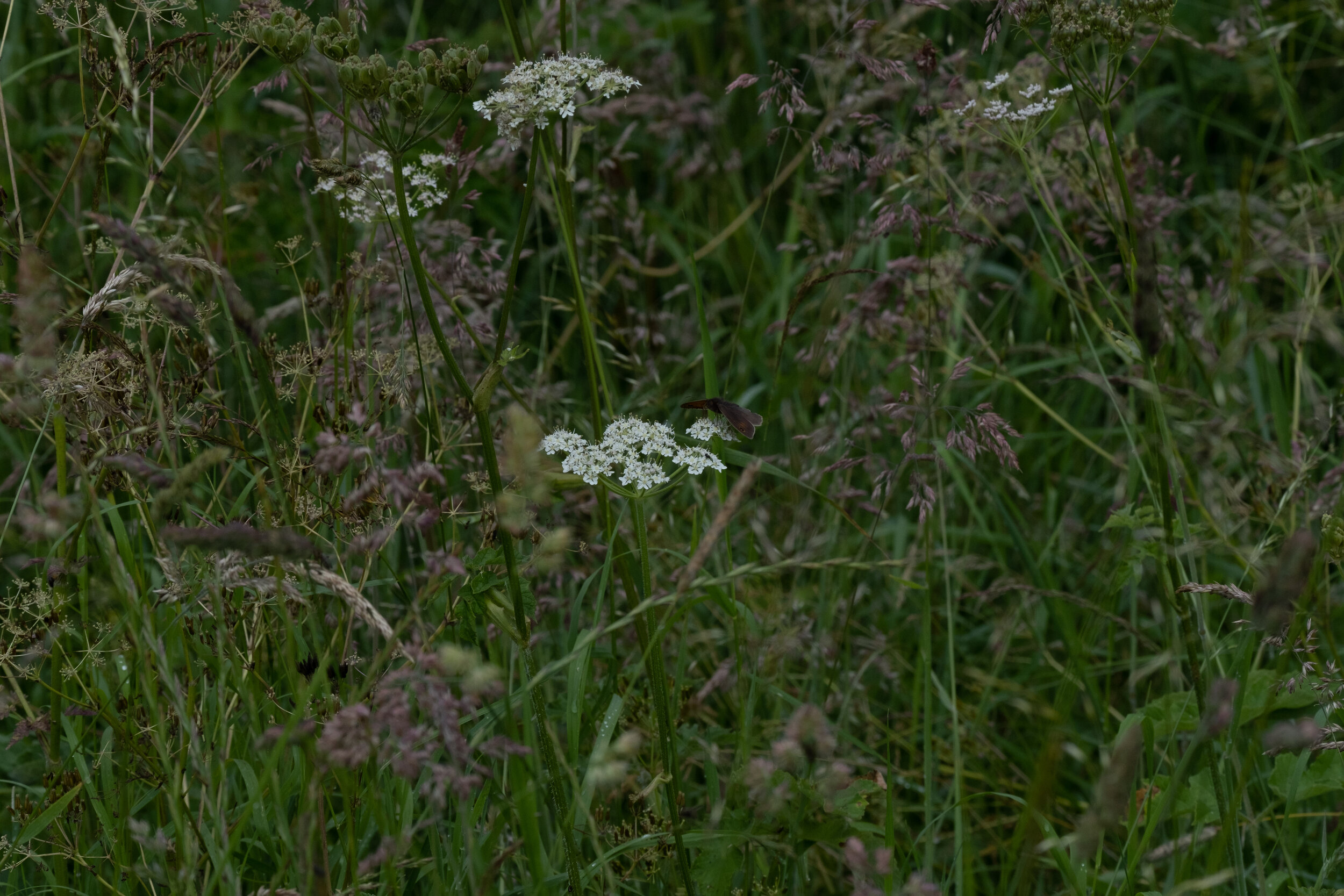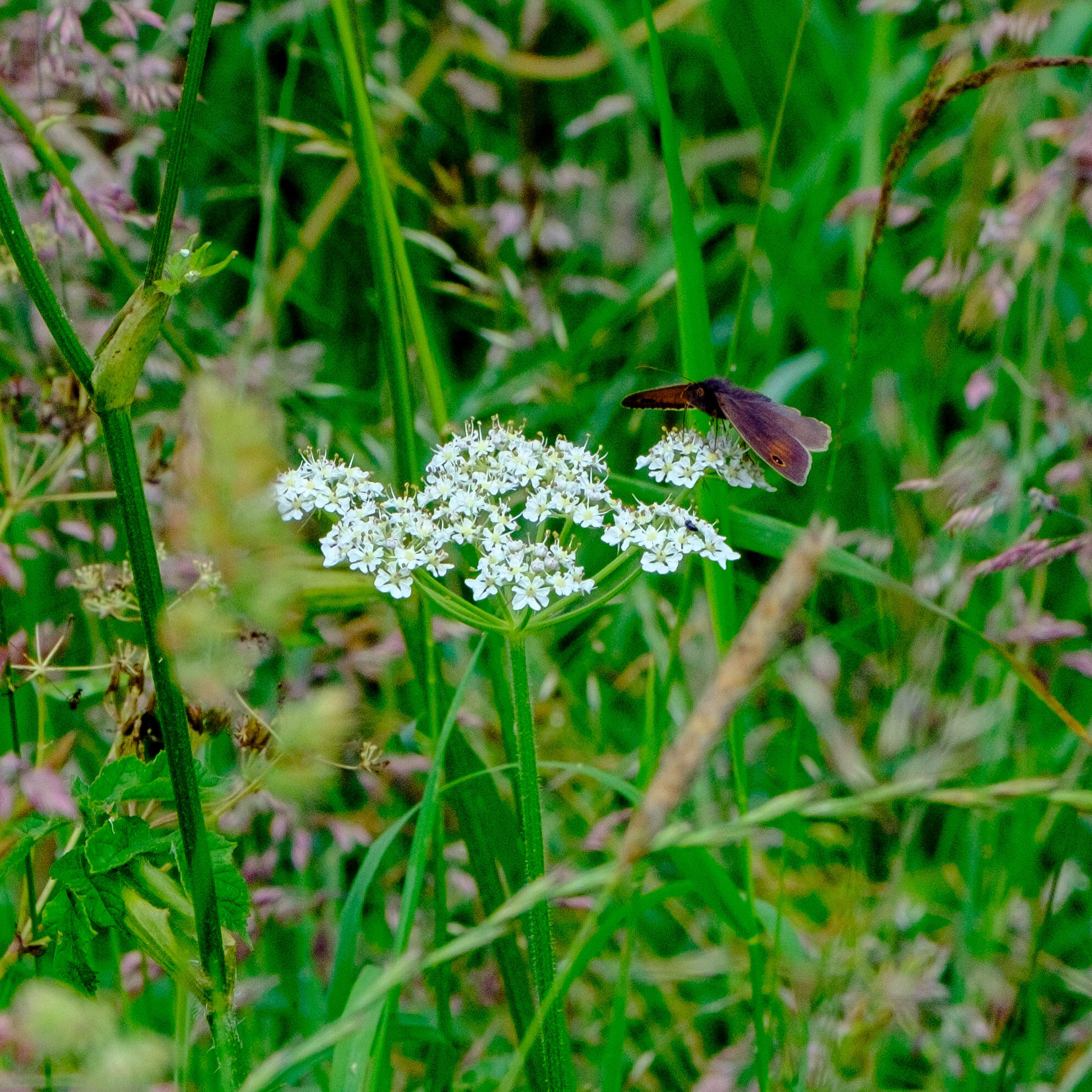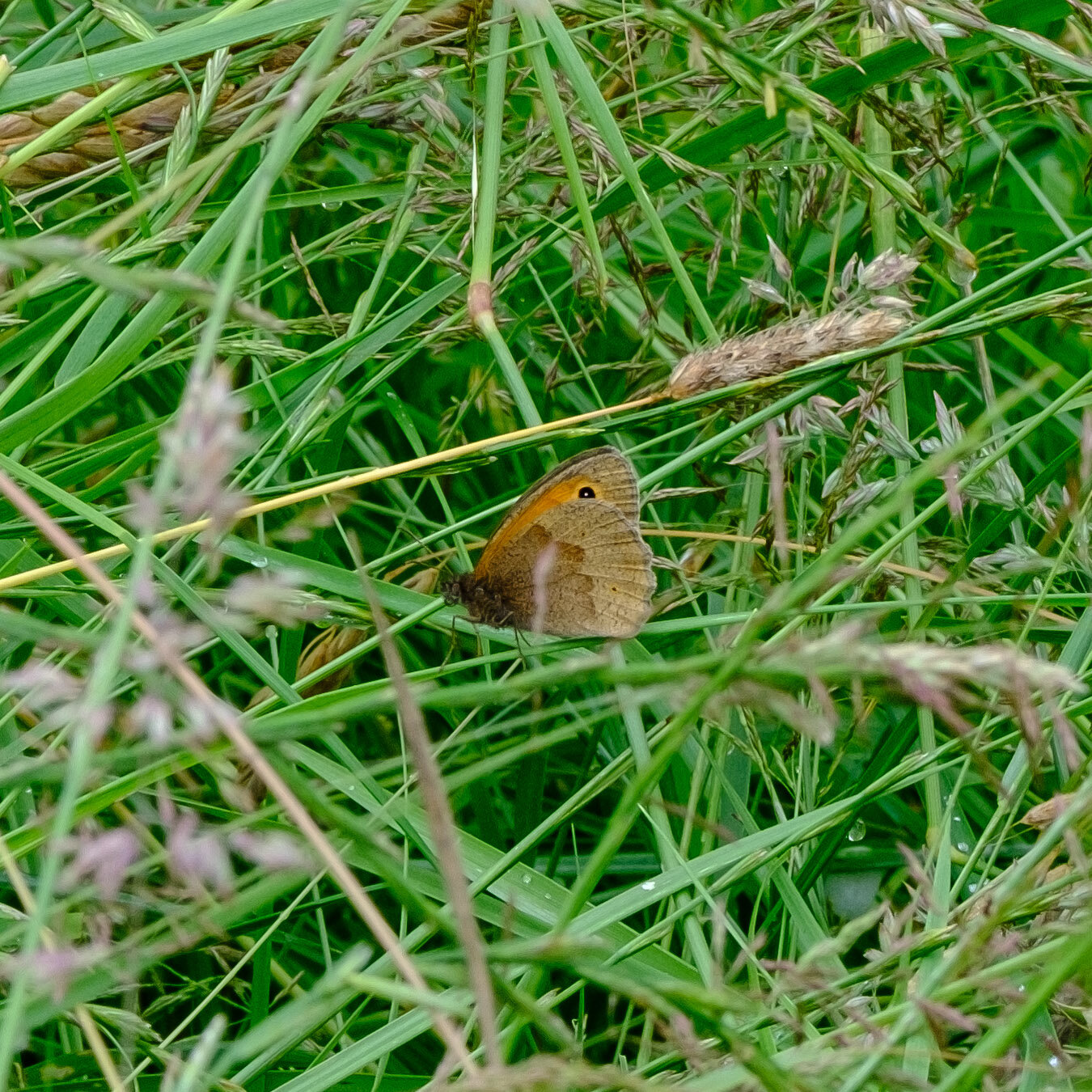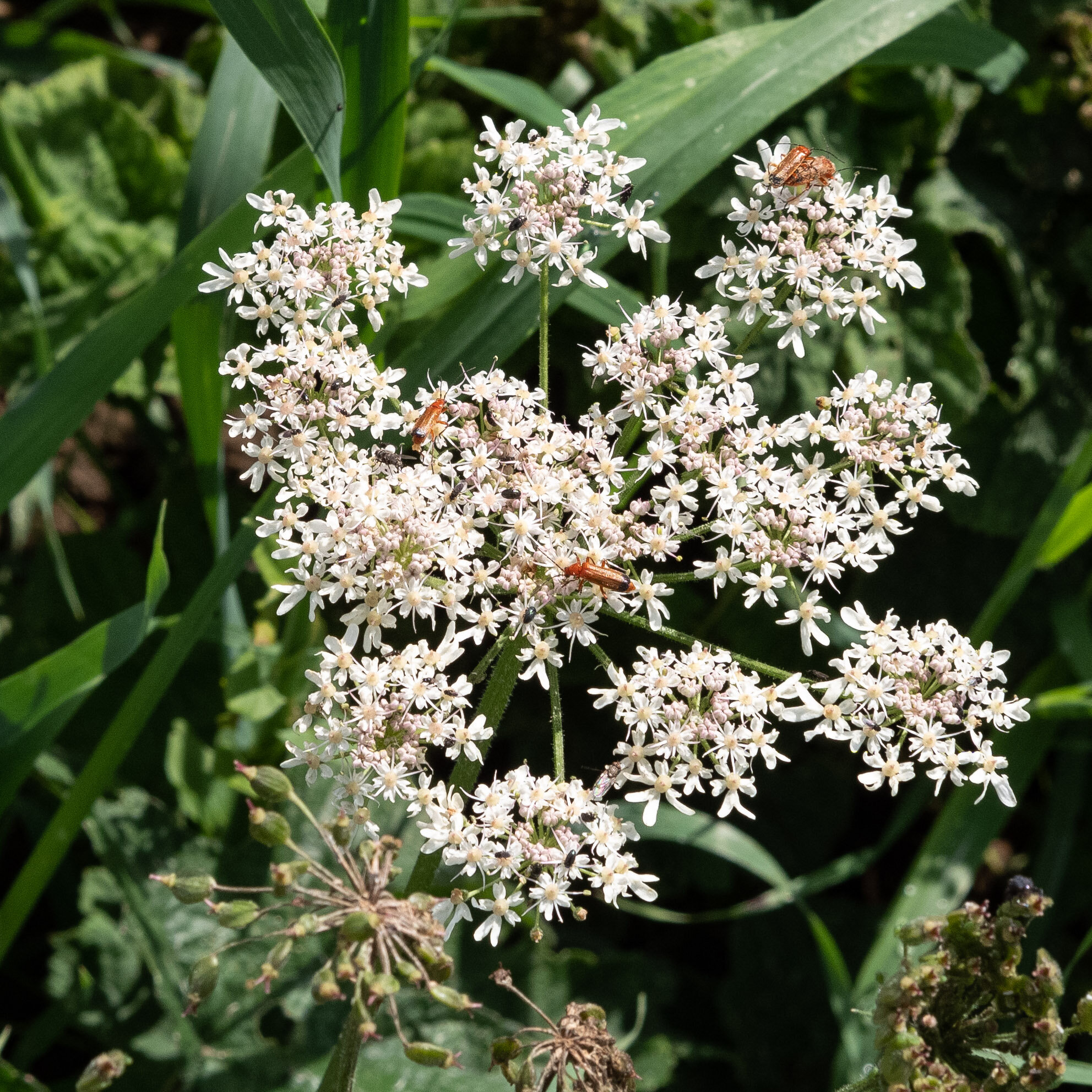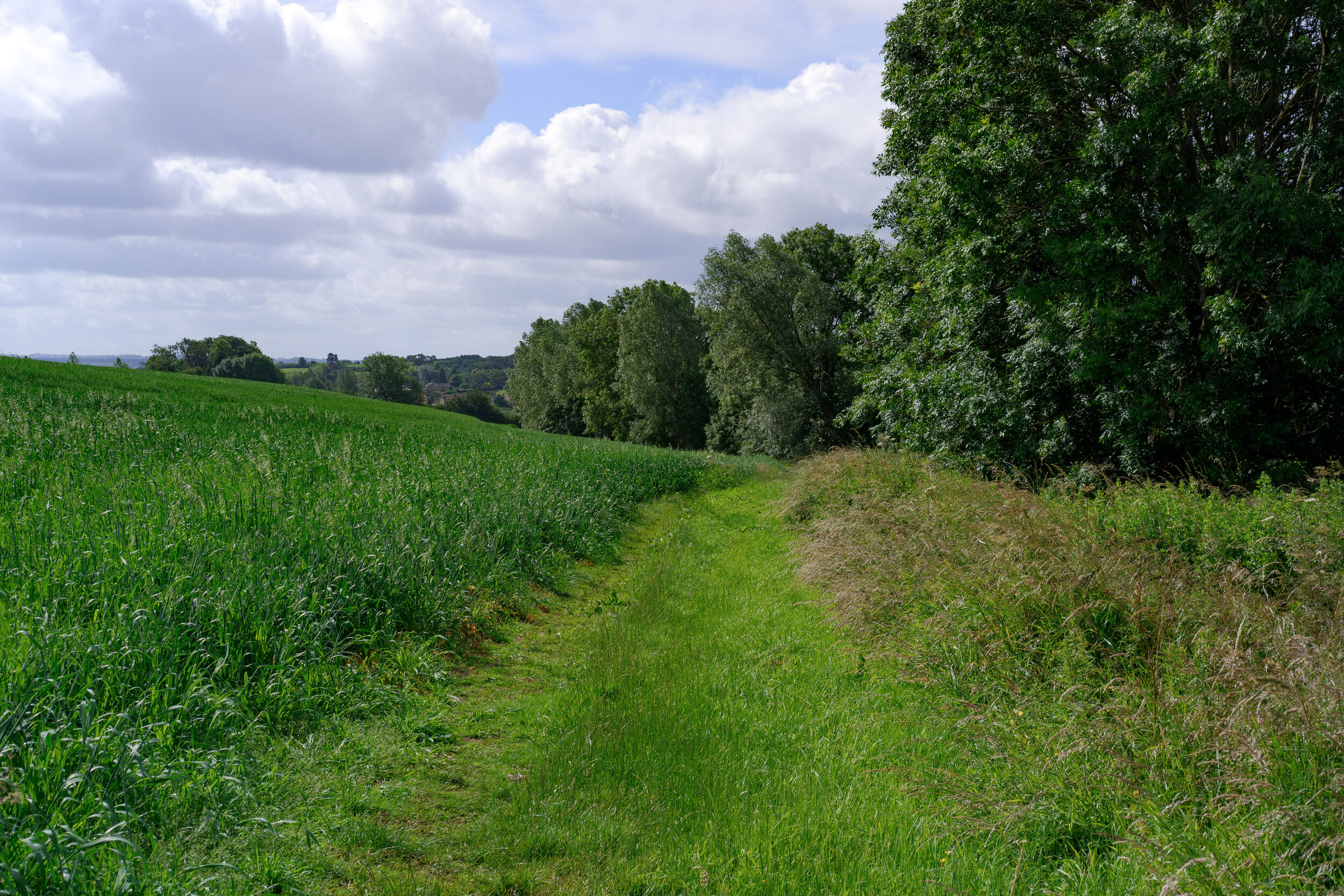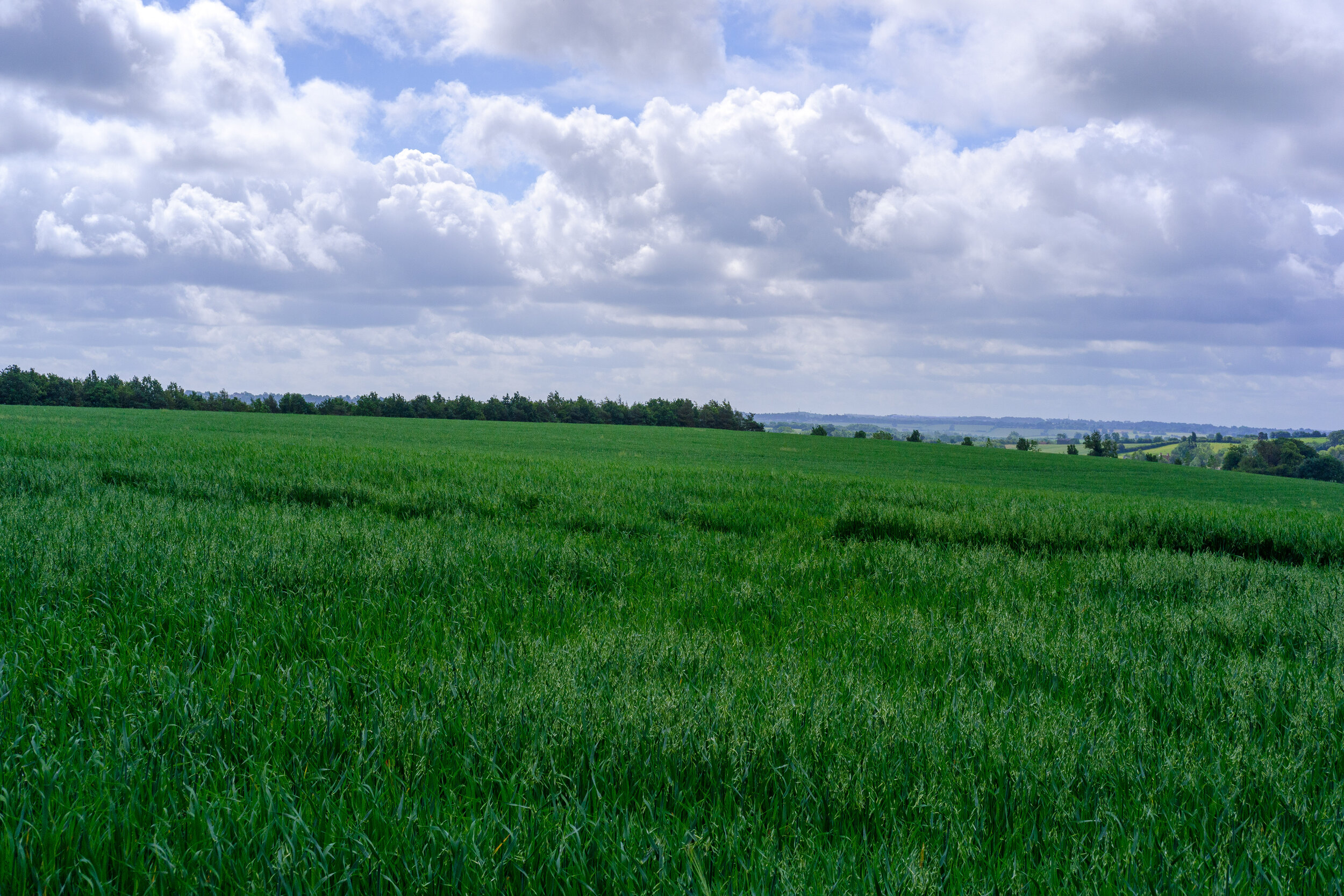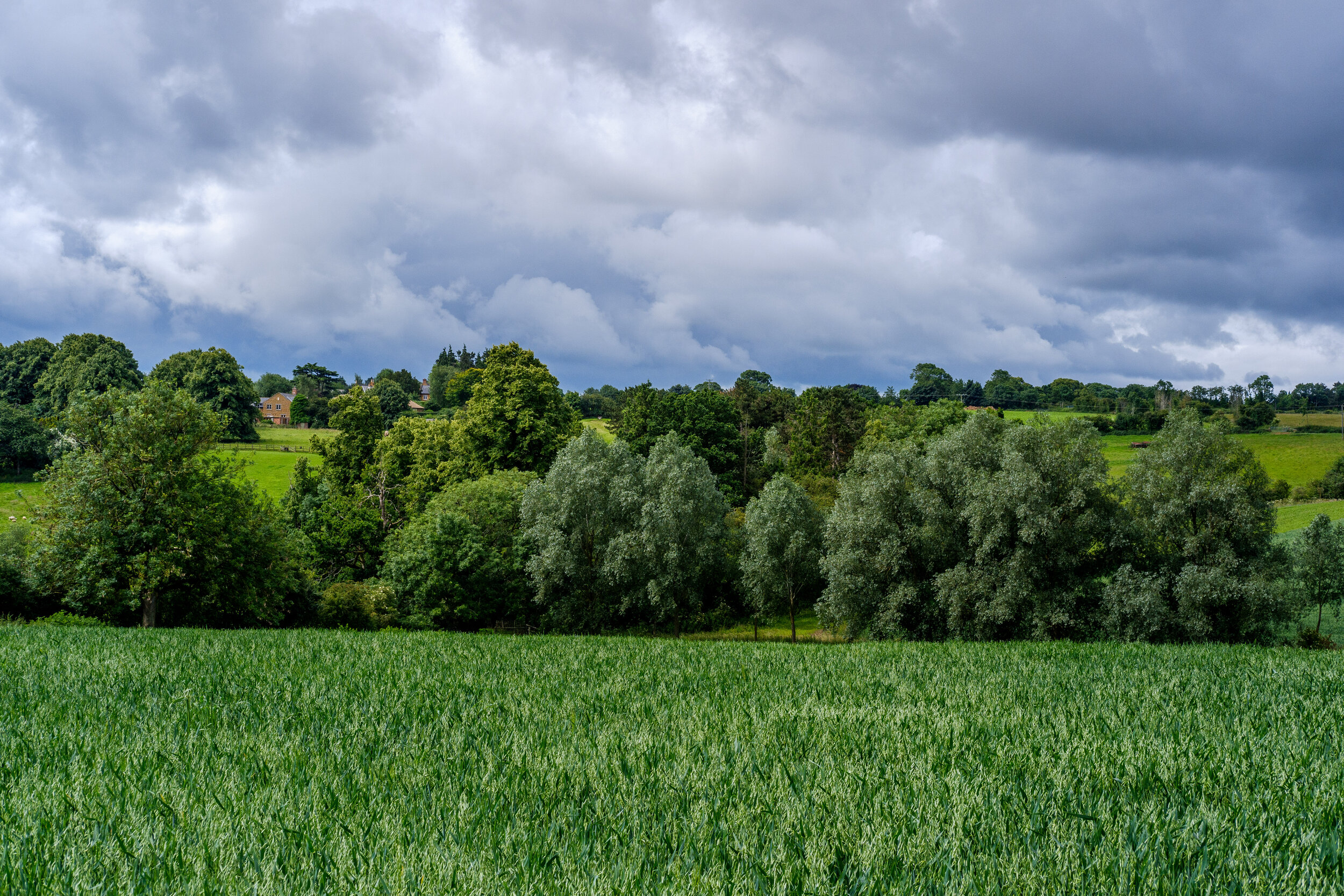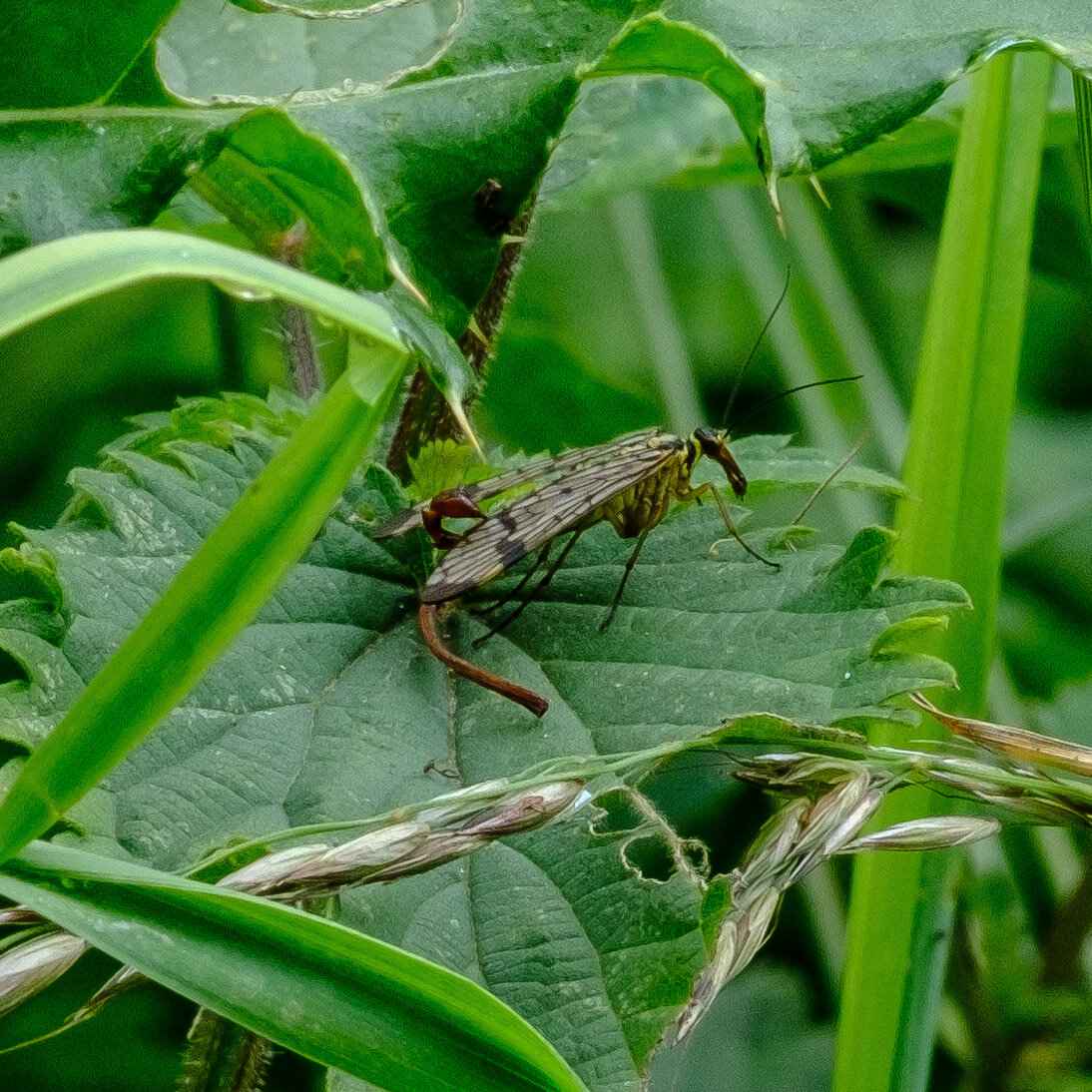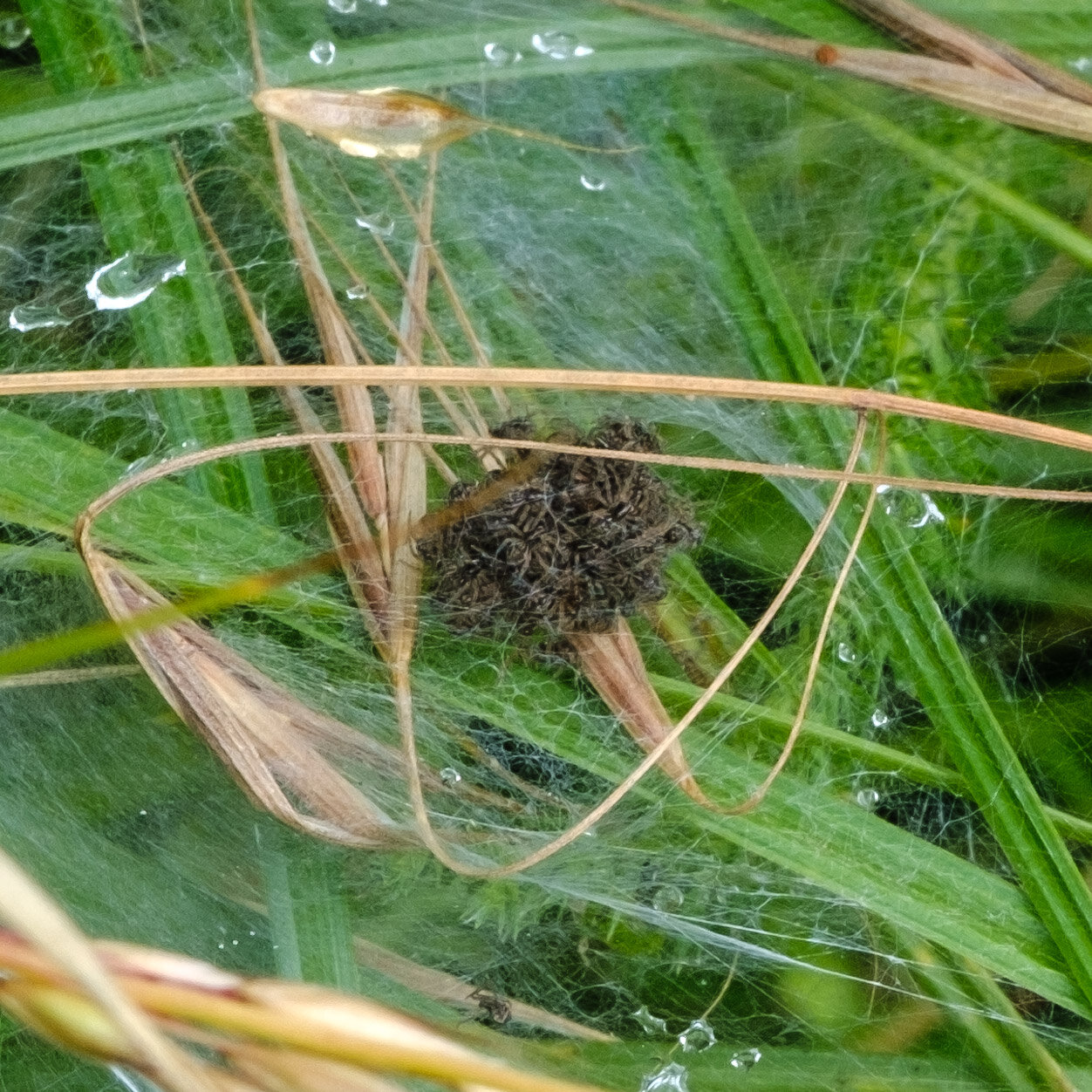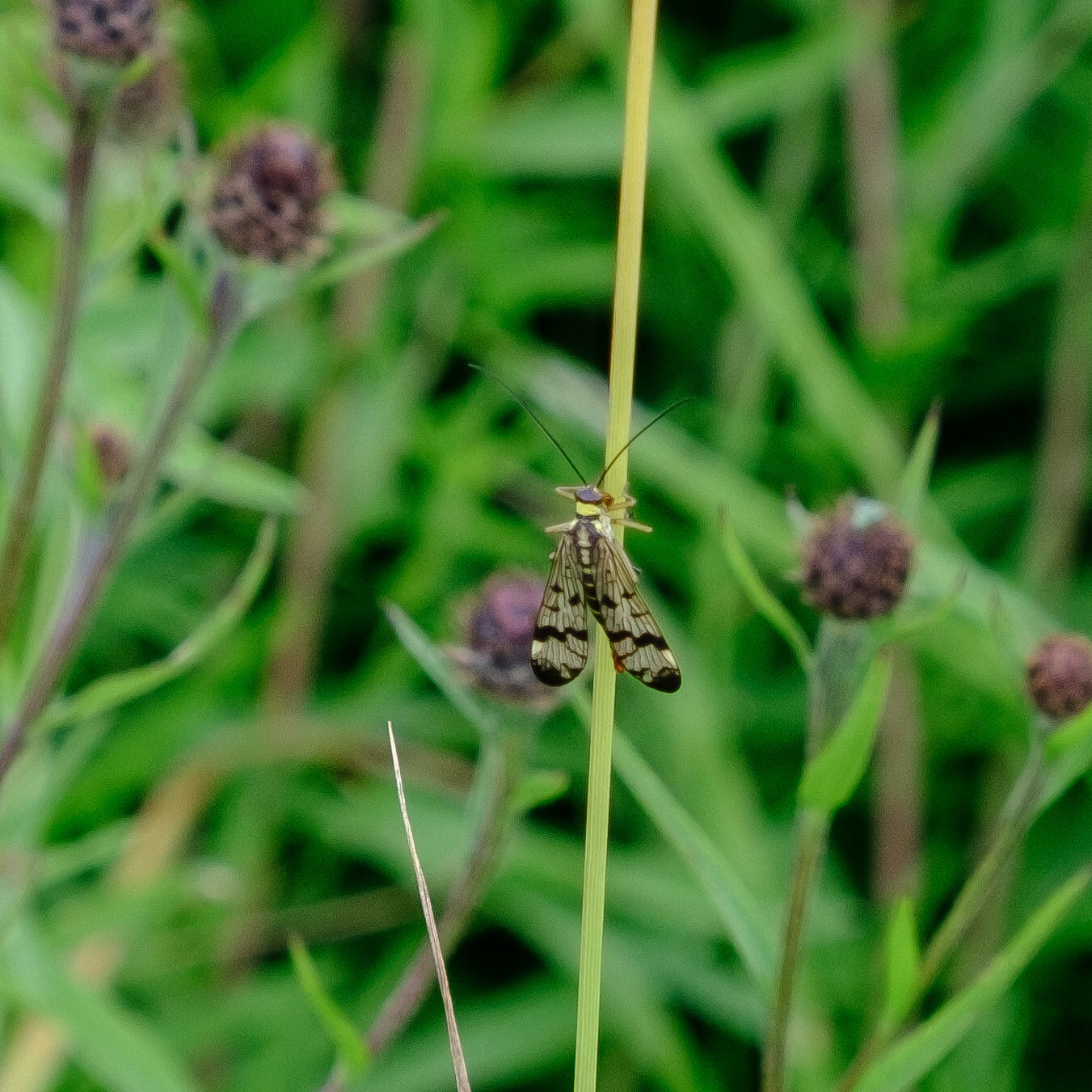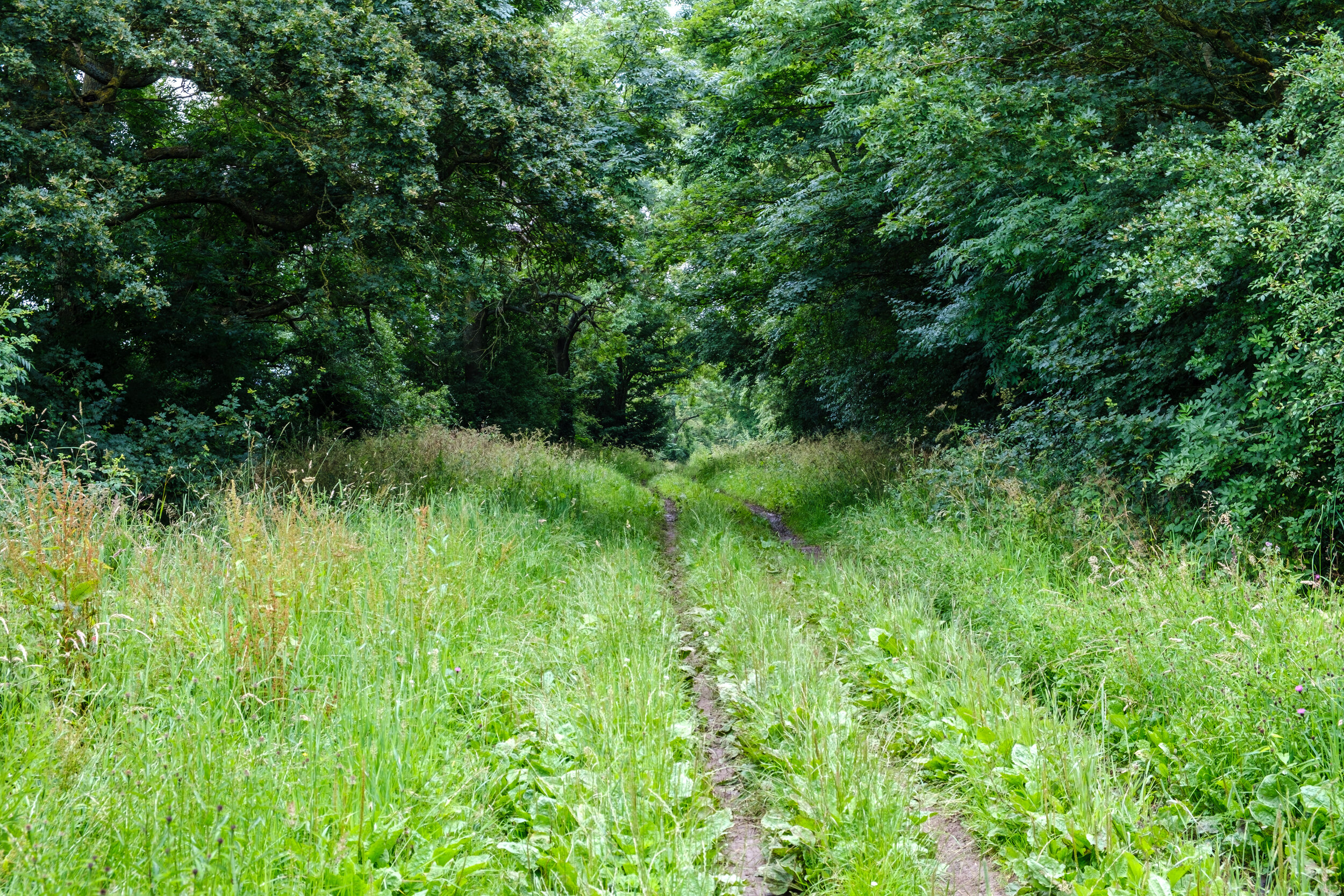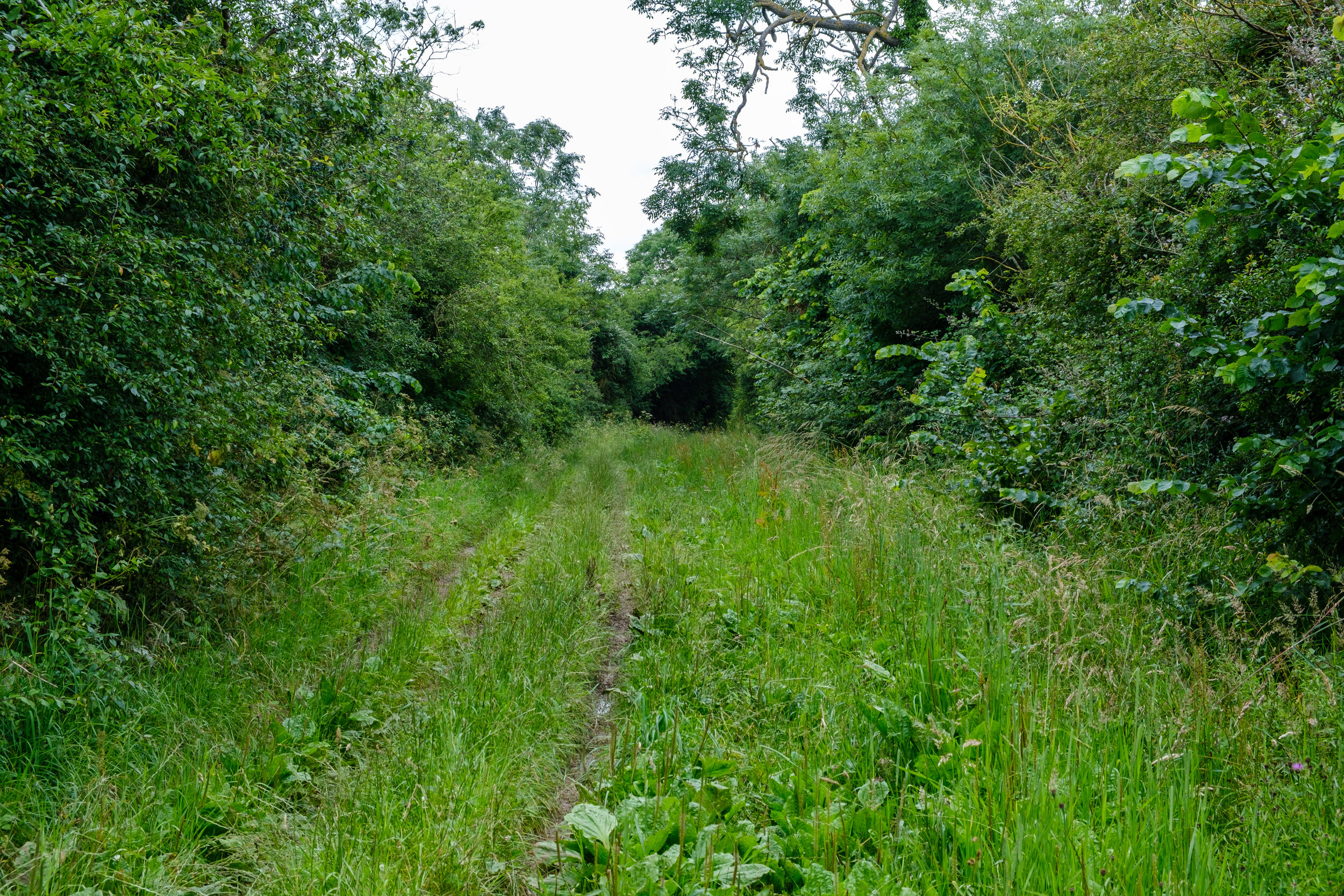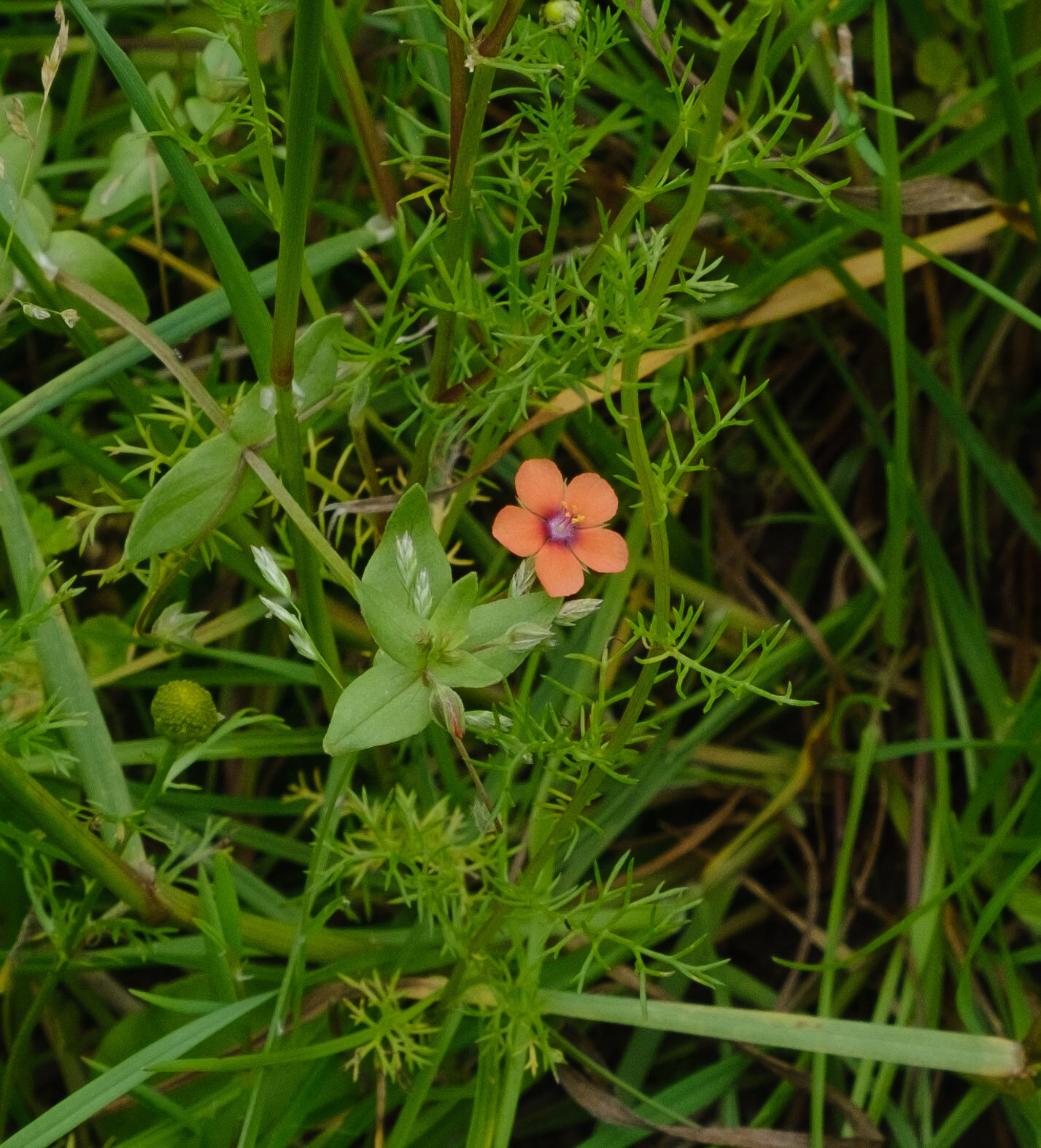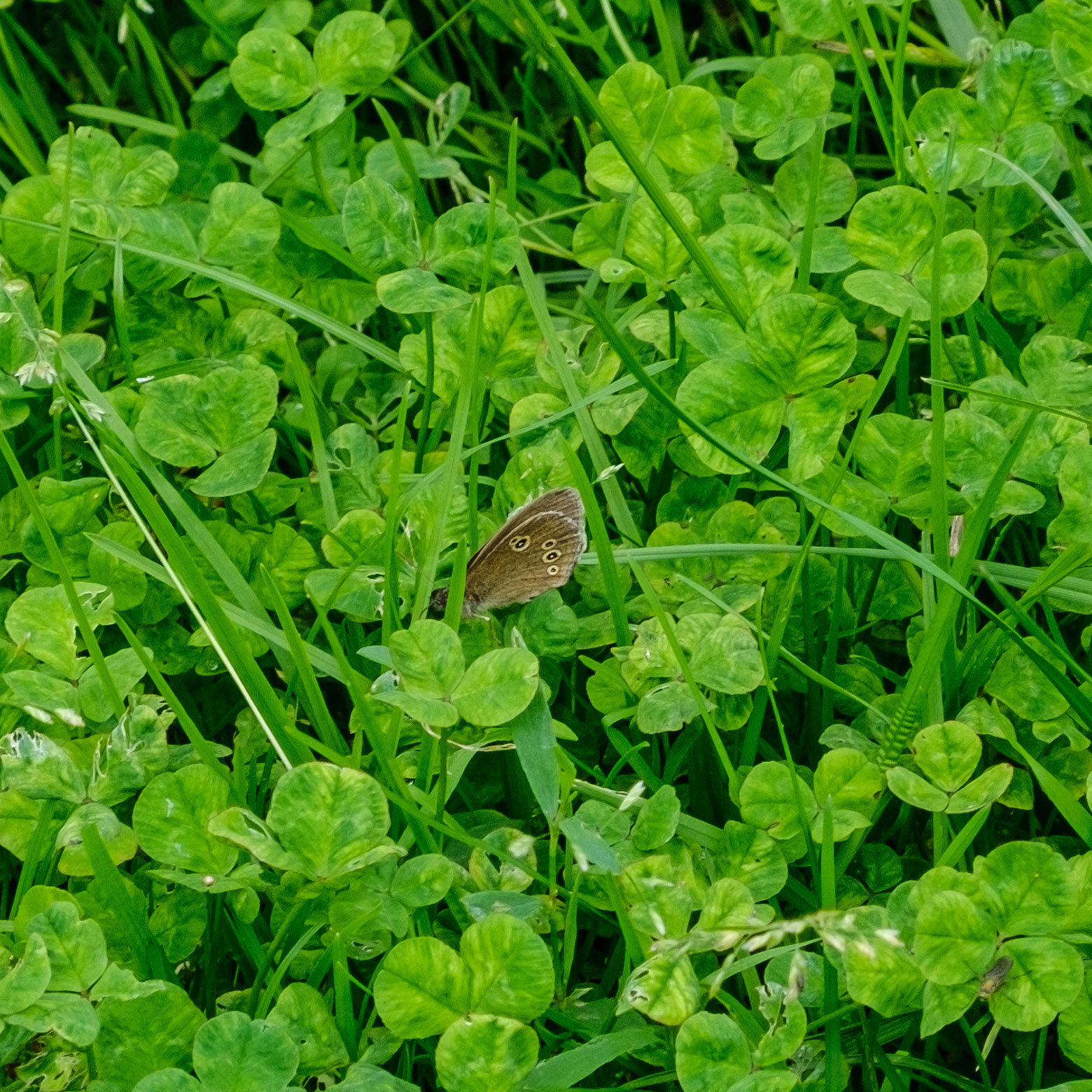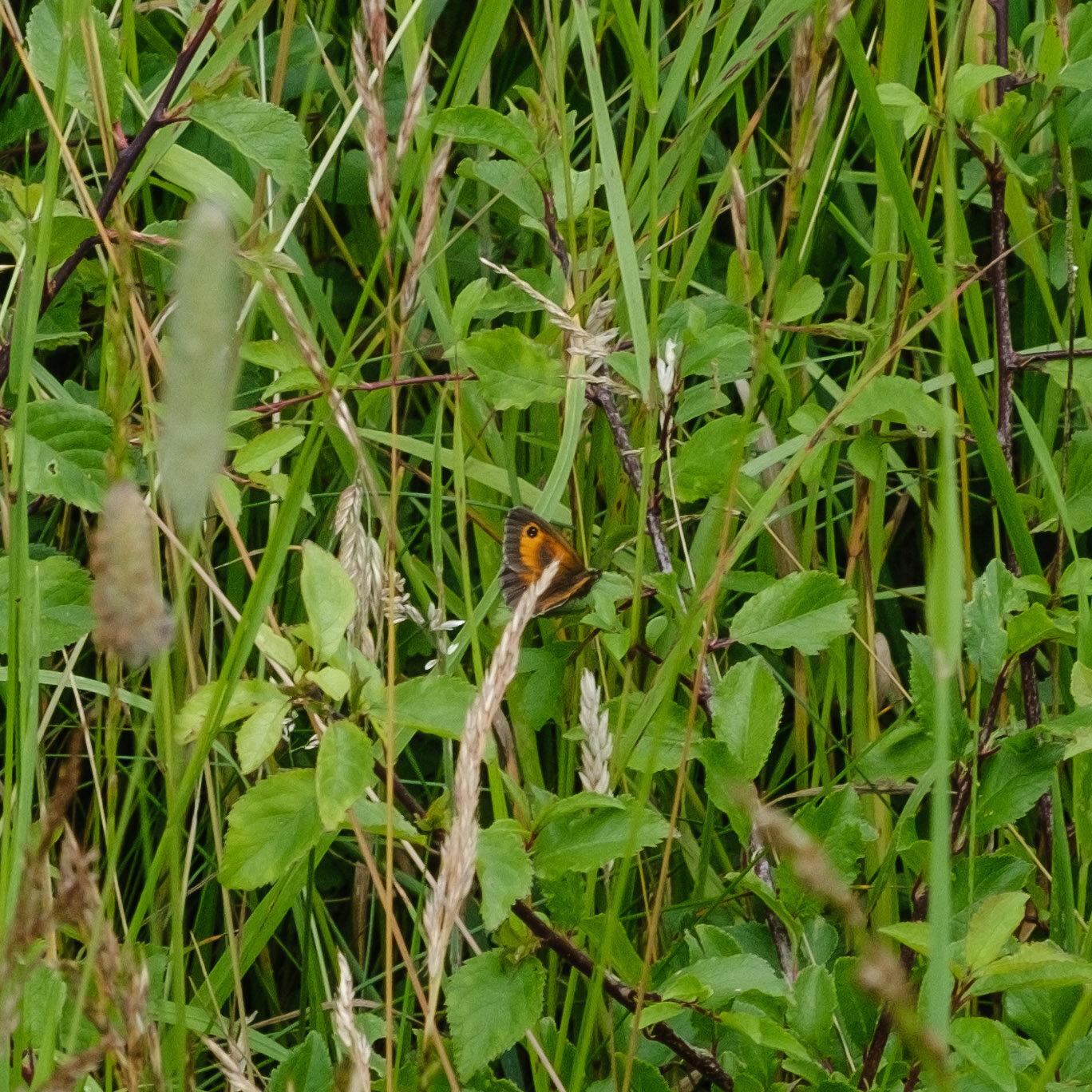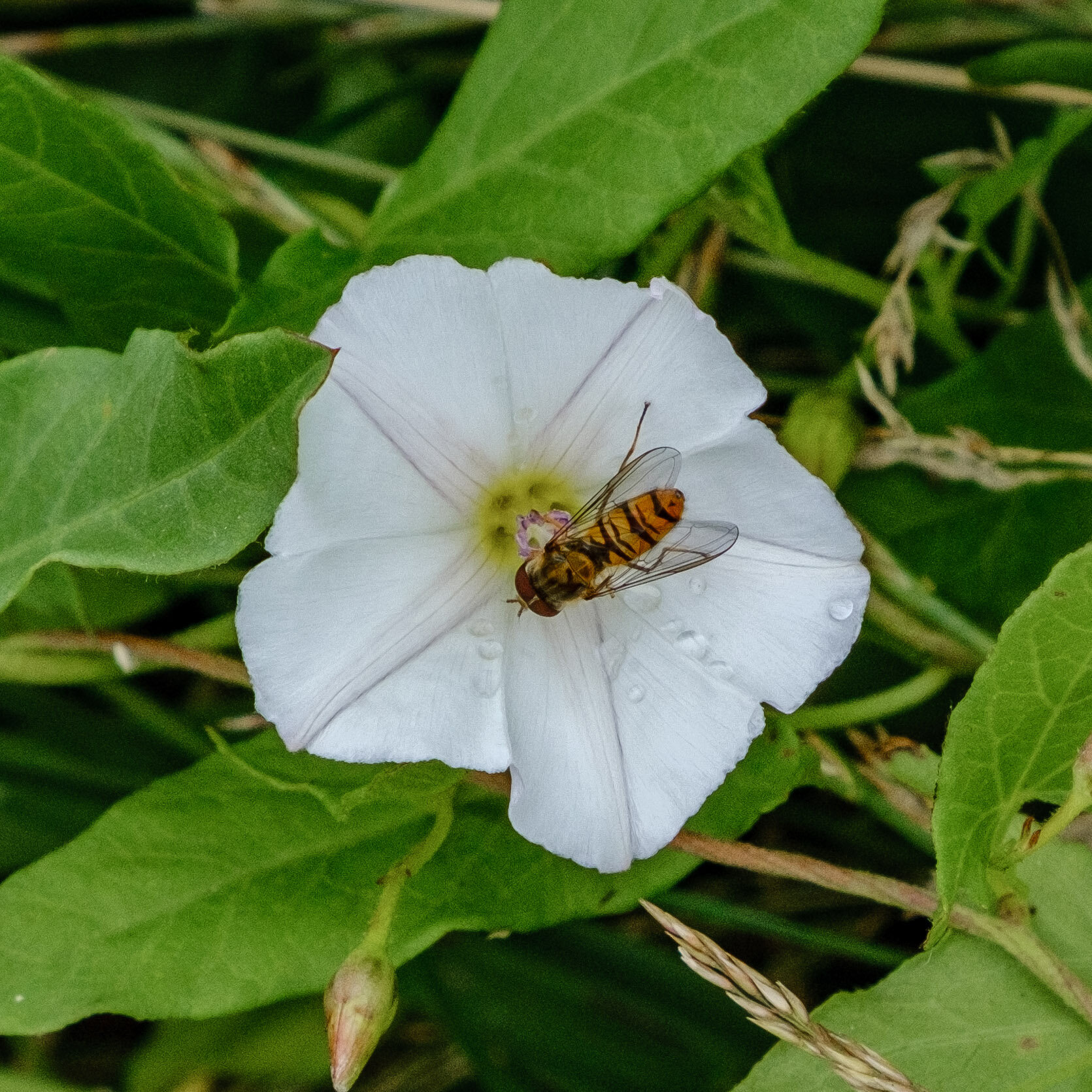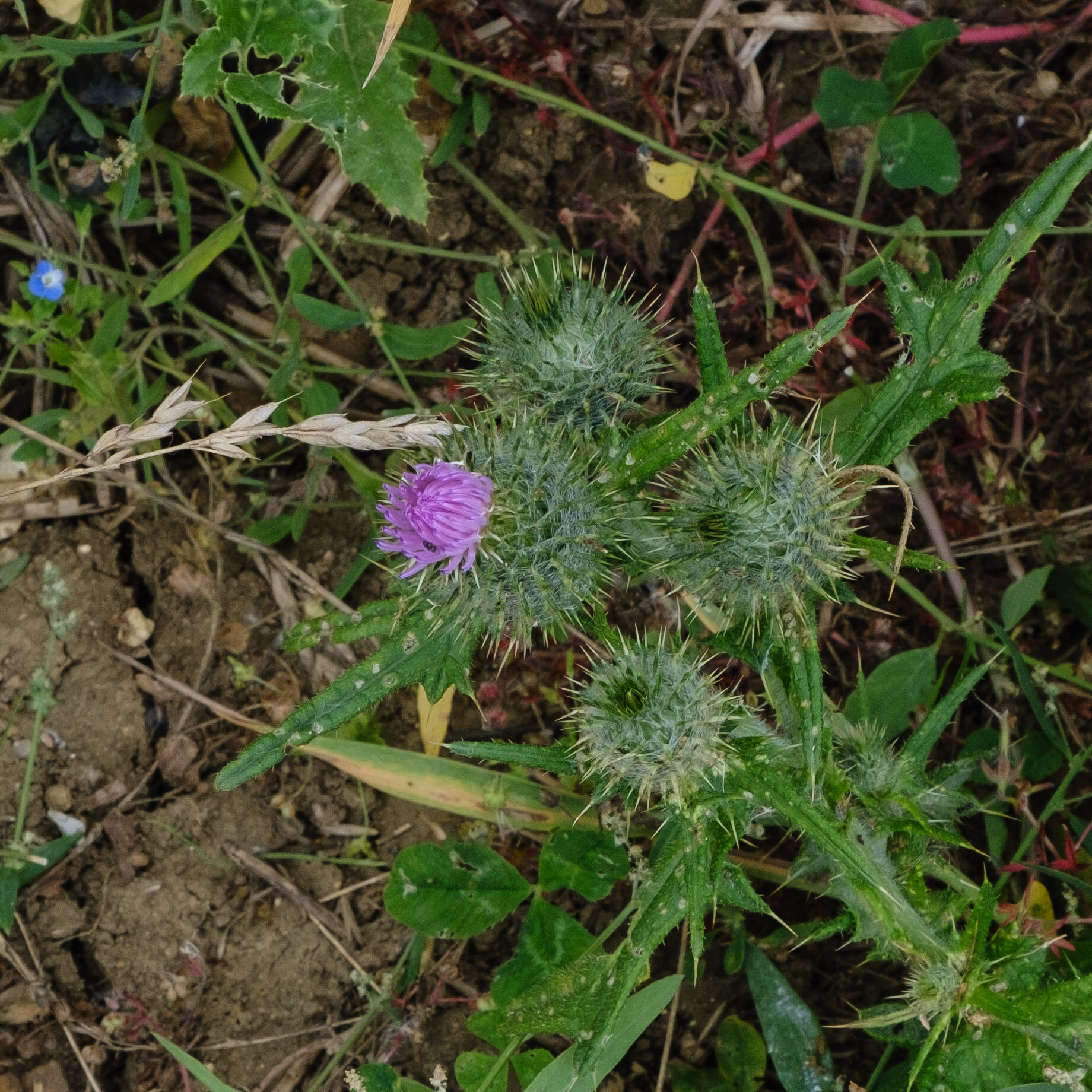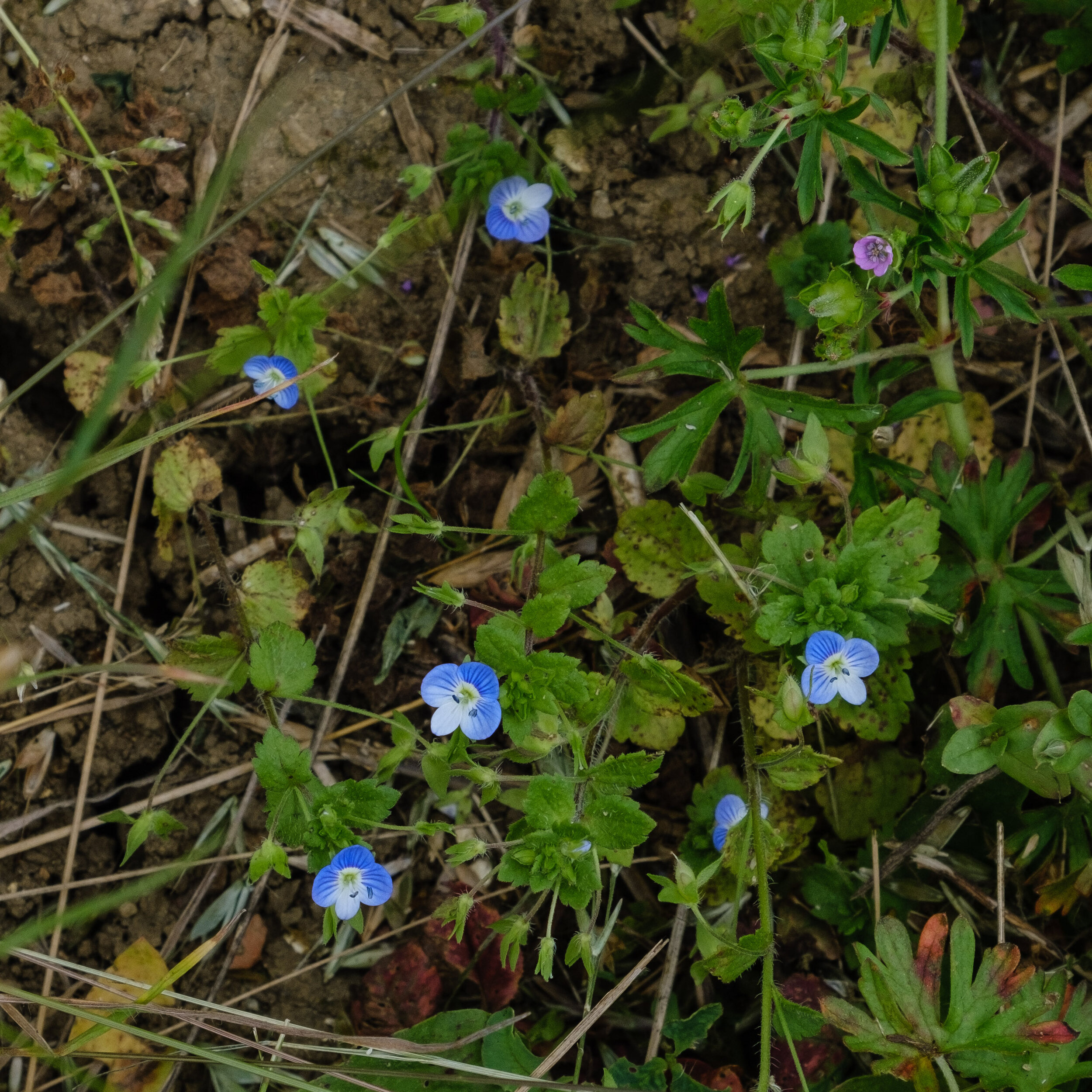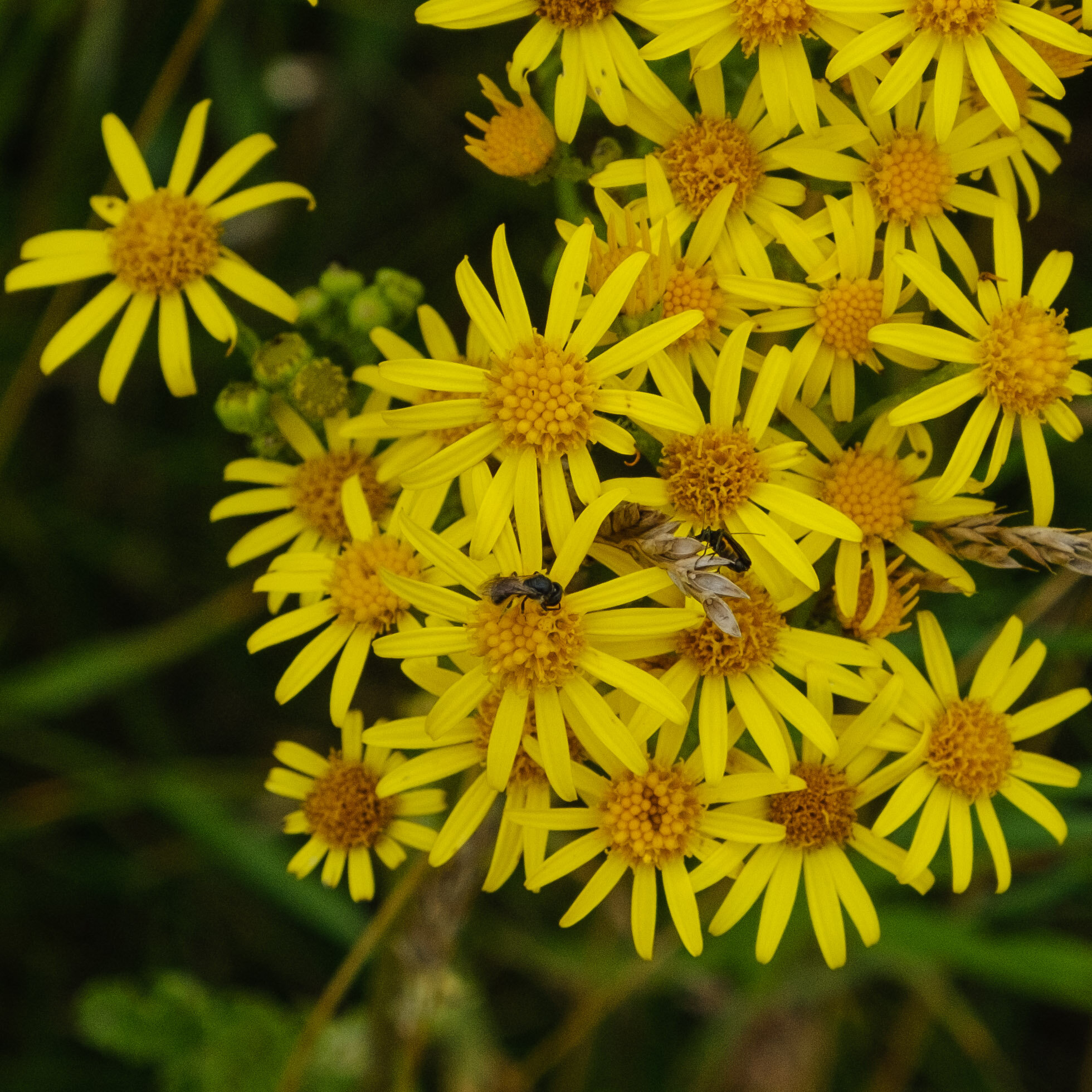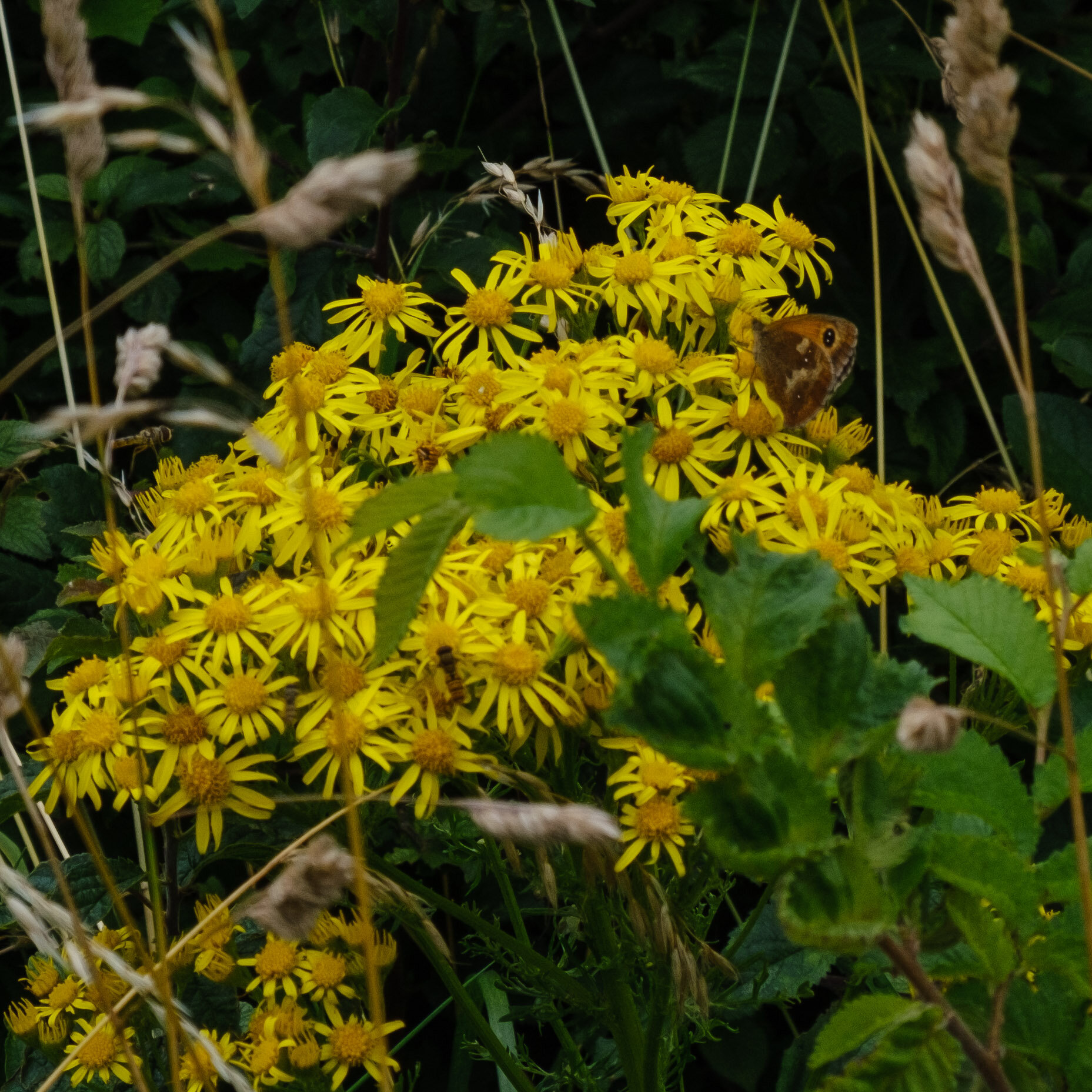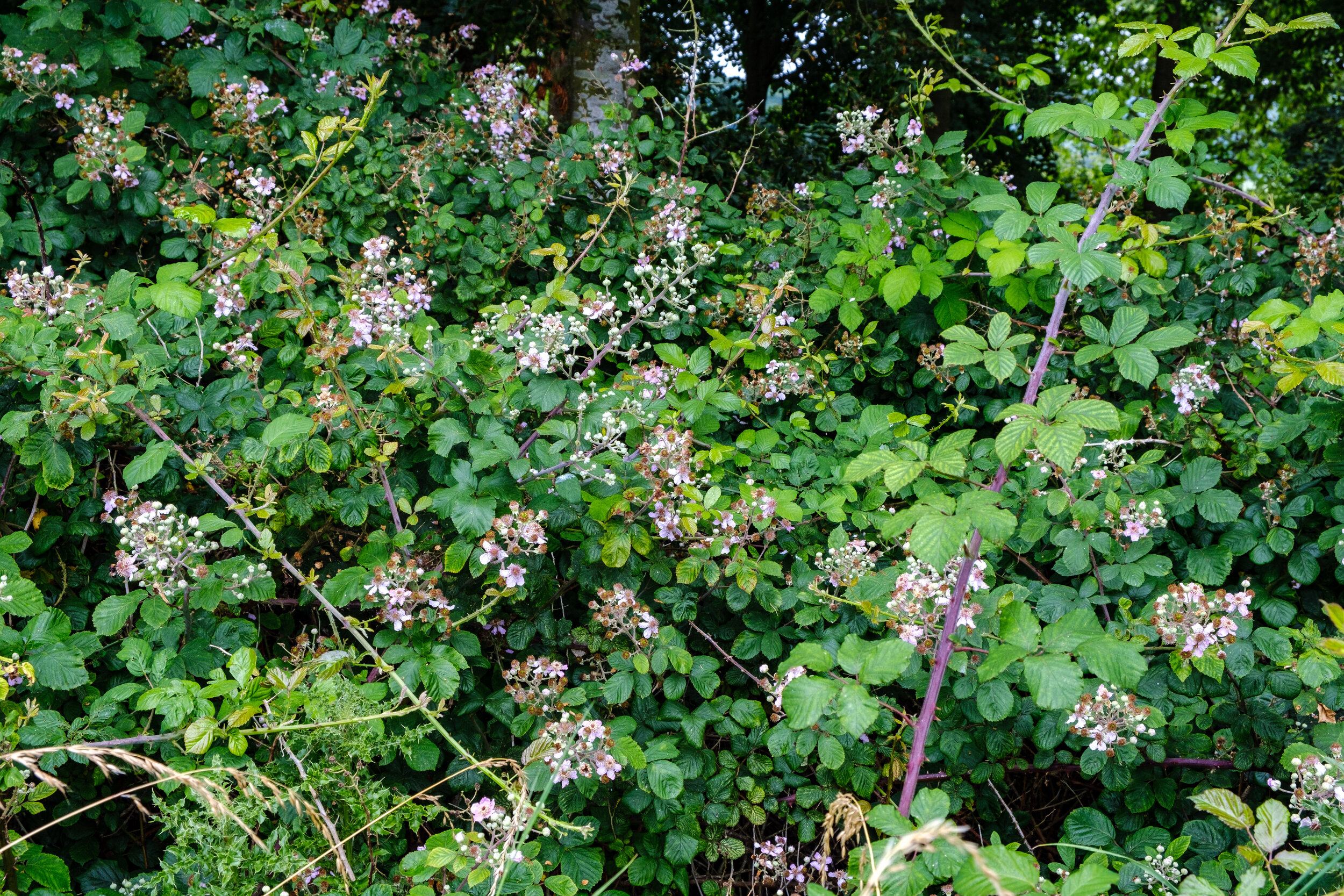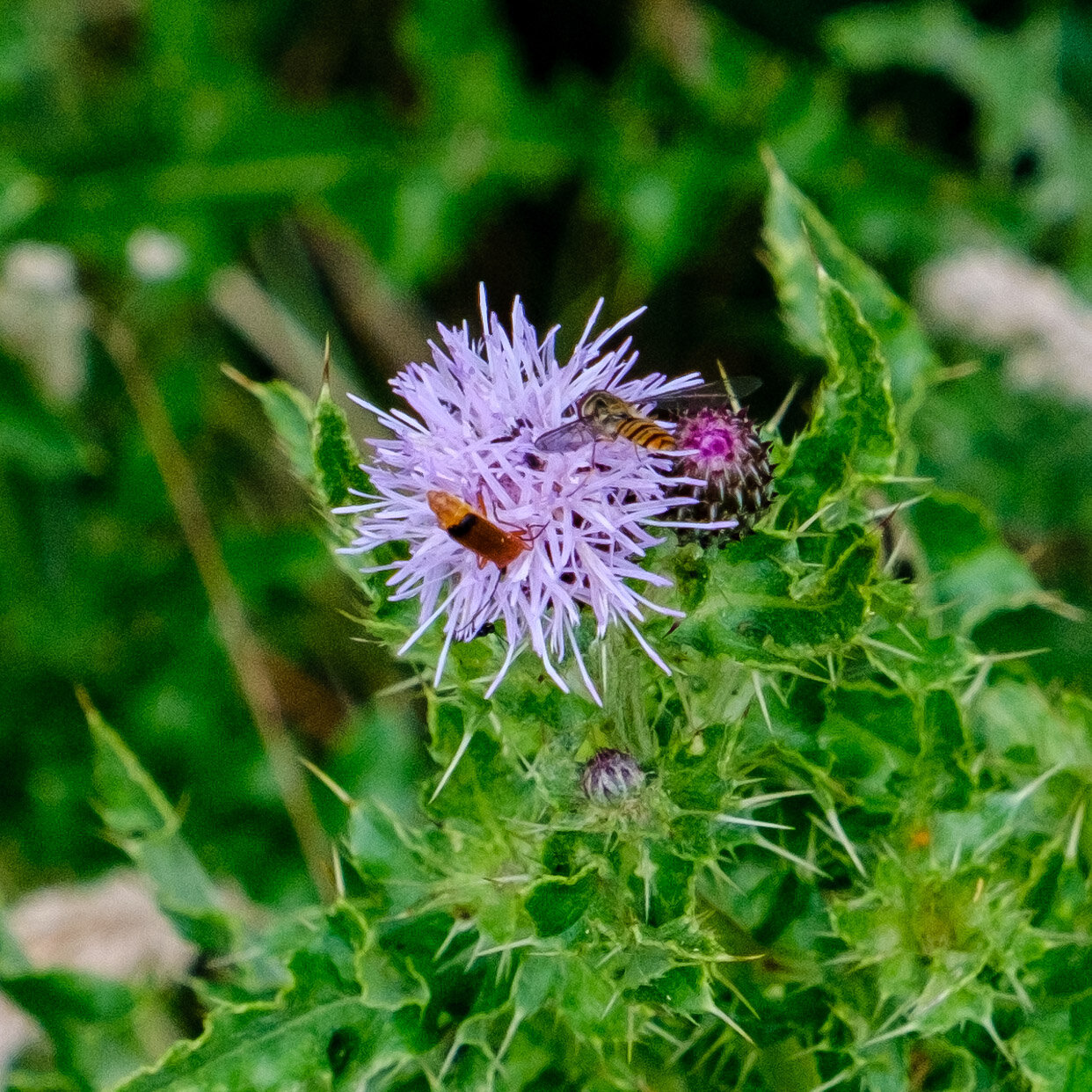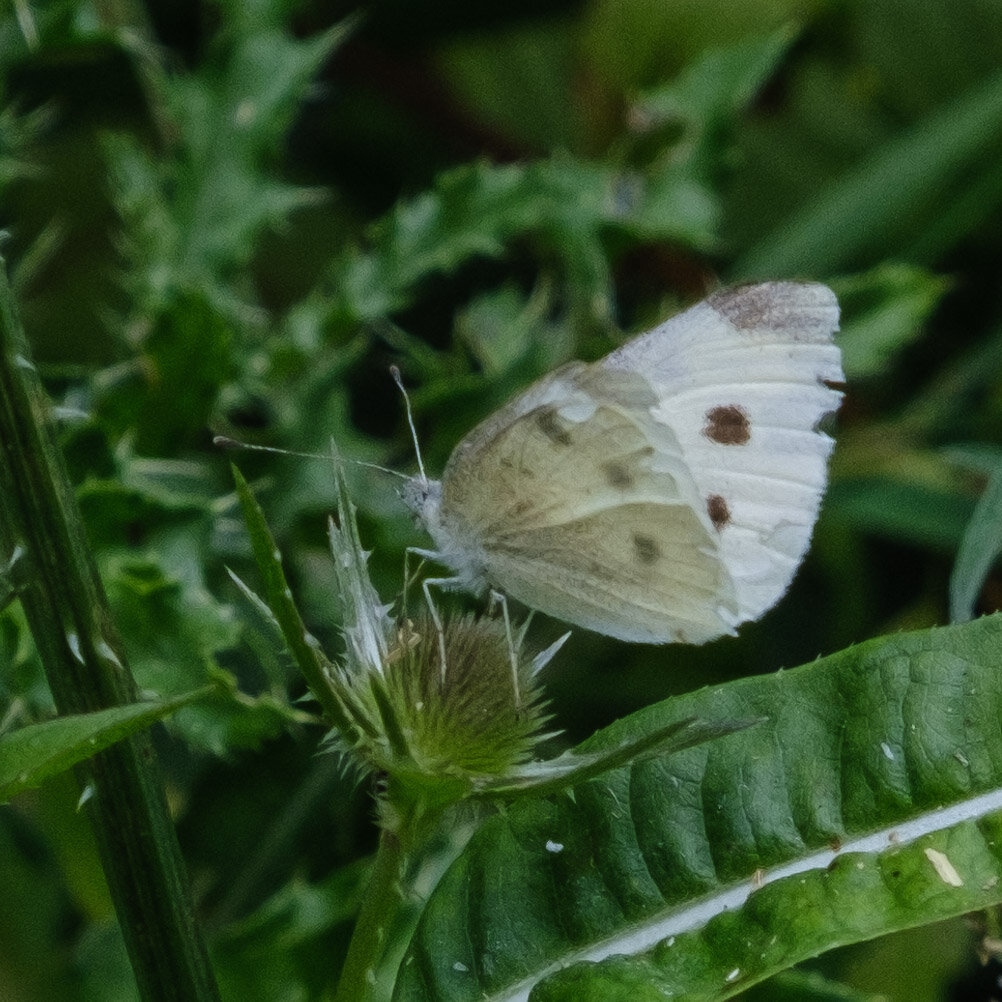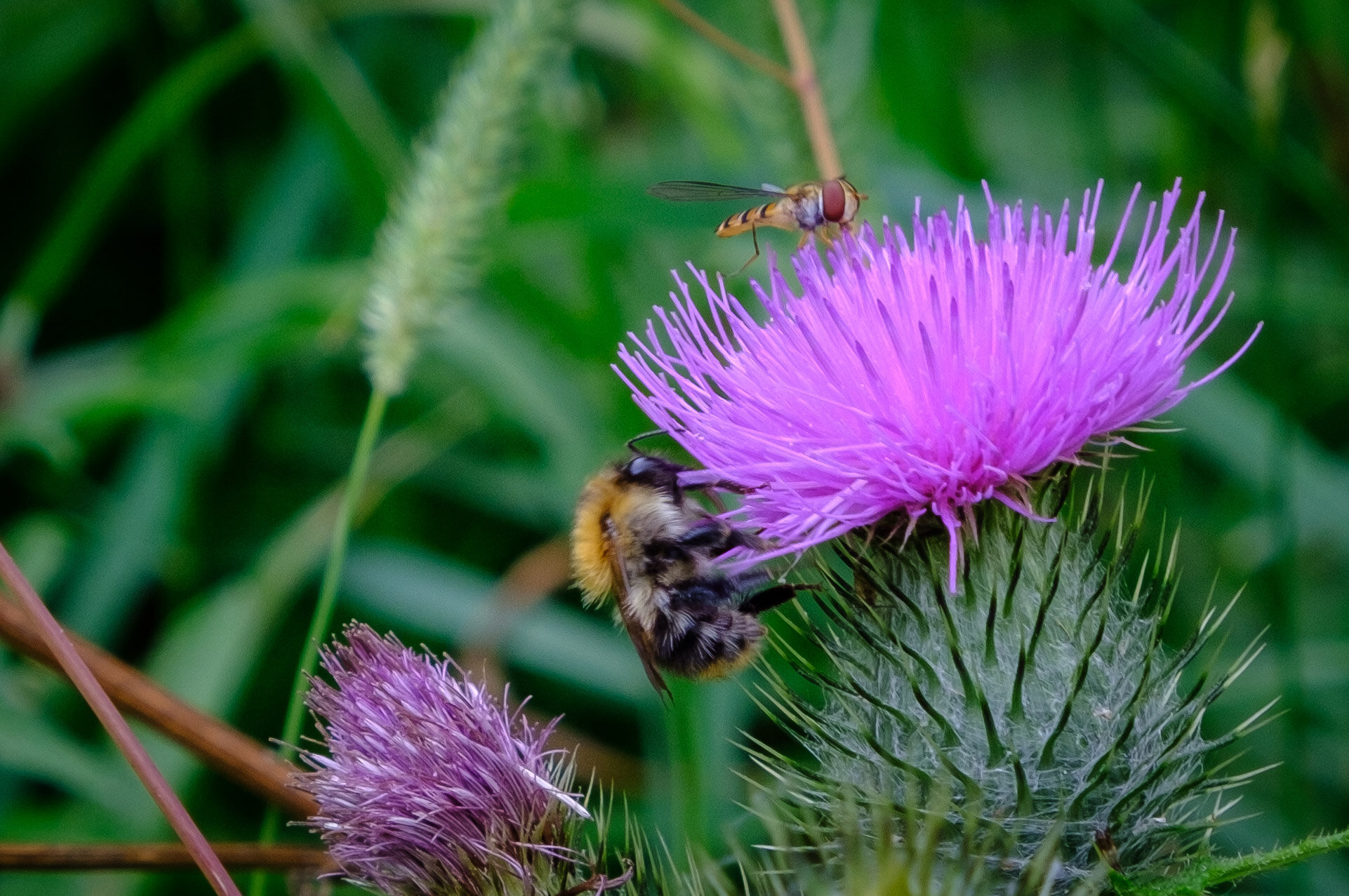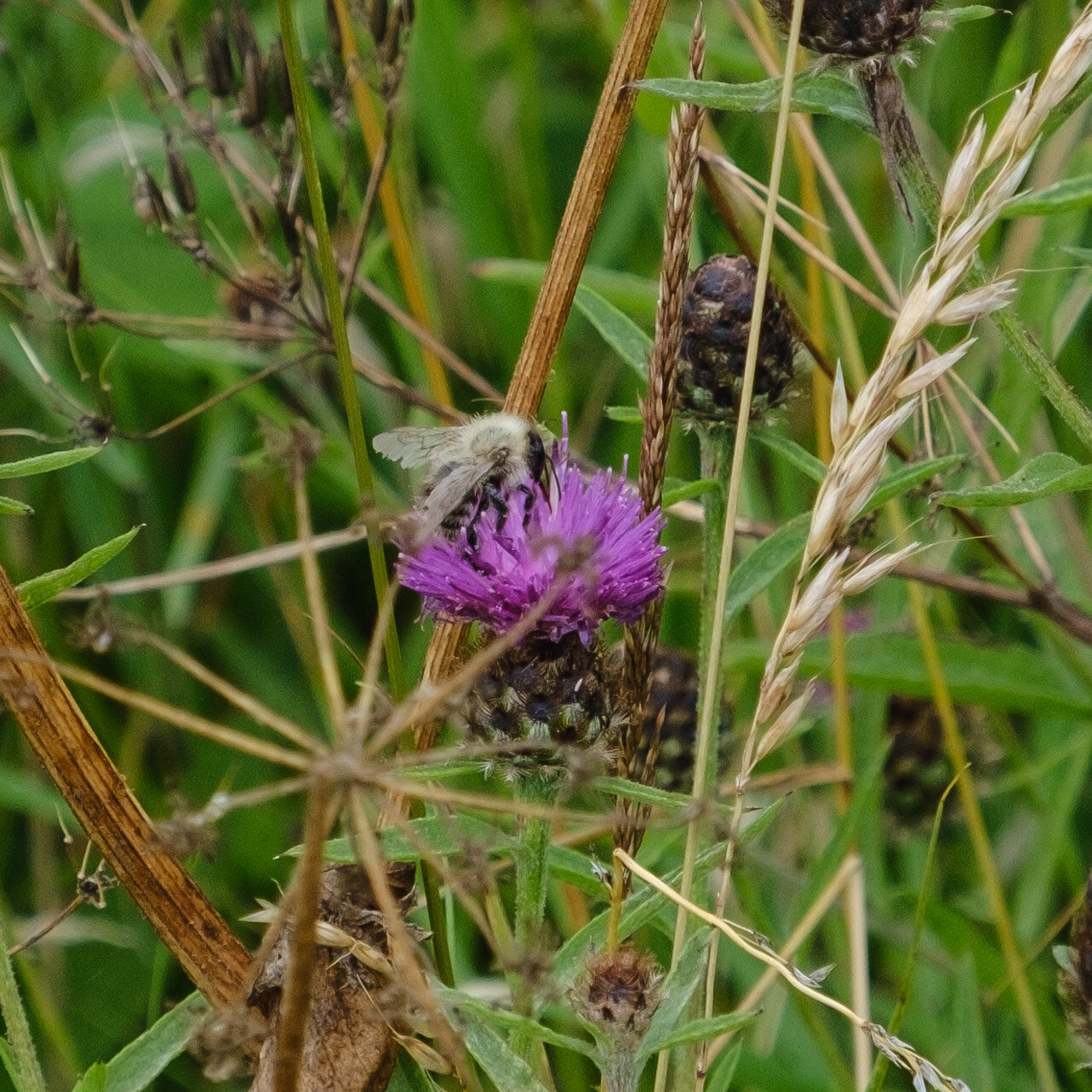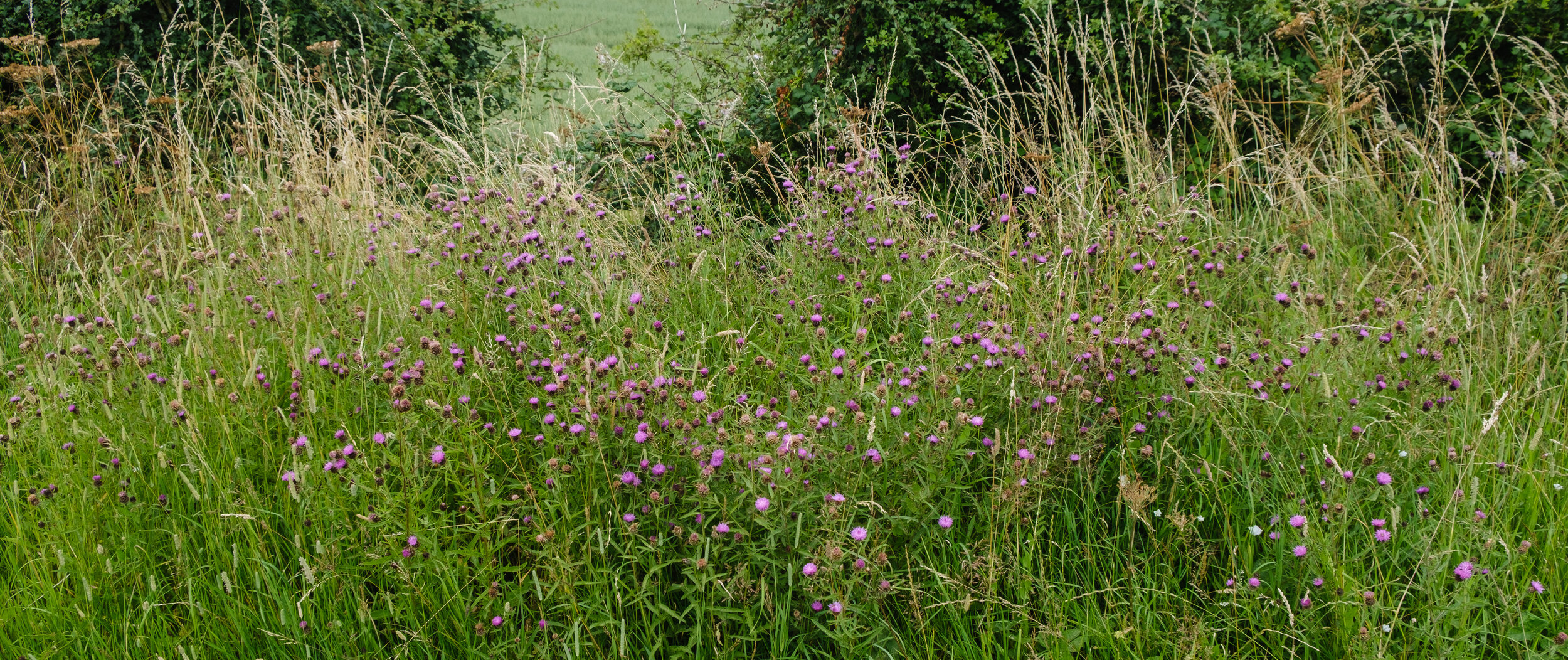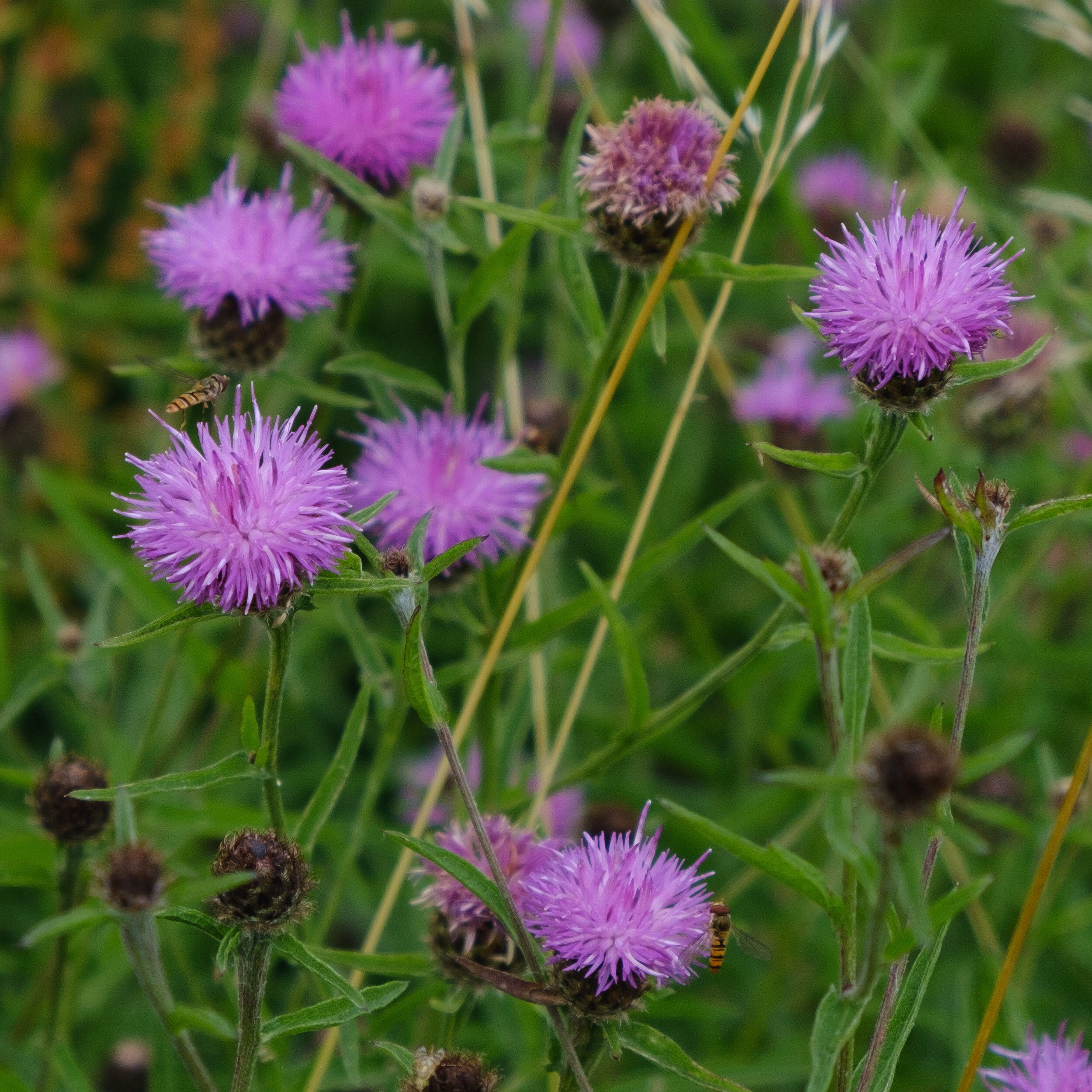Myfield in July
July in Myfield turned out to be a month that didn’t seem to do much, with one exception. At the start of the month the crop was still green and the grain heads were beginning to fill out. This year it was oats, something not seen here for a few years. Everything else was vibrantly green, the trees, the grass and plants on the margins. On overcast days, the crop looked really vibrant whilst the surrounding trees were quite dark and the fields and woods on the far horizon, to the south, took on a purple tinge.
I suppose that when undertaking a year-long project, one should expect a dip in enthusiasm or continuity and in early July I think I was well into that trough. On my third walk round, and despite the month being only 6 days old, I was clearly a bit disheartened, perhaps by the weather as it was windy, lots of high cloud and a temperature not much above 14 if that. All I could notice was the lack of flowers: the cow parsley was finished, the hog weed had been and gone and despite perhaps one or two examples of flowering plants, it all felt quite colourless. Even the vibrant green of the crop was beginning to dull.
Then I caught a little sparkle of brightness out of the corner of my eye. I was walking up the western side and on a young beech tree a Small Tortoiseshell butterfly was sunning itself. Things are not as dark as they might appear.
Small Tortoiseshell (Aglais urticae)
And this is the thing about July in Myfield, it becomes the time to see the summer butterflies. The Small Tortoiseshell took off and more-or-less bounced in the air, its flight like some sort of trampoline display. Soon there was another and the two continued the bouncing display but around each other. Just to take the edge off the moment this is when I realised that I did not have the right lens on the camera to capture this pre-nuptial dance. However, to stand and watch and take in the beauty of it all is far better than worrying about getting the right picture.
Meadow Brown (Maniola jurtina)
As my mood lifted with the sight of these butterflies, the sun appeared and there was instant warmth. The smell of the recently mown grass on the margins rose through the air and further lifted the spirits. A moment later a Meadow Brown appeared as I continued up the rise to the northern edge of the field. At the top, the presence of Tortoiseshells was left behind and the dominant species here at the early part of the month were the Meadow Brown and the Ringlet. The Meadow Browns circle round, flitting here and there, and then settle for a few seconds, and then off they go again, busy little creatures but clearly cannot make up their mind what it is they are going to do next.
Ringlet (Aphantopus hyperantus)
Later in the month, the weather was more settled and warmer. On a good butterfly day, the first thing that caught my eye was the dusty orange of a Skipper, enjoying the sun as it slowly moved across the field. Soon after, a bright Small Tortoiseshell was similarly taking the sun and was so vivid it must have been quite new.
Large Skipper (Ochlodes sylvanus)
The challenge of the morning however was tracking the Ringlets as they teased me along the field edge. Stopping briefly on a leaf, as soon as I thought I would get a shot, off it went, always just far enough away to not get a good picture. As we climbed towards the northern edge they were joined by several Meadow Browns. At times it is very difficult to tell them apart when in flight, especially as they both fade with age to similar shades of light brown. Often one would approach another with, to me, the sense that here might be a relationship worth developing, only to find that the steadier Brown is not the one for the skittish Ringlet.
Gatekeeper (Pyronia Tithonus)
It was also the time in the month when the Gatekeeper starts to appear. Richer in colour than the Meadow Brown it is smaller and has two white spots on its dark dot on the wing compared to the Meadow Brown’s one. Despite their name, they do not seem to frequent the entrance but perhaps there is too much shade at the gateway, and it is quite the dampest part of the field.
There were the occasional Red Admirals about but they would possibly come again a bit later. A white butterfly flutters past on my walks but rarely near enough, nor still enough, for me to hazard a guess. Recognising them is my weak spot.
Reed Bunting (Emberiza schoeniclus)
Of birds there was little to note. Most singing had stopped and apart from the wood pigeons and corvids, usually jackdaws and rooks, not much took the eye. That is except for a Reed Bunting that had decided to perch atop a fading ragwort plant and take in the sun. They are often seen in this area but it was unusual to see one so clearly and so still at this time year.
In the middle of the month a nearby field was losing its cover of hay. It had been the most attractive meadow I had seen since my childhood and now the tractor worked its way round, the cut laying out in the sun for the next few days before being taken in. Overhead a couple of corvids were laughing and tumbling and a red kite circled round, following the tractor, waiting for the mower to discharge a tasty dish.
Across the estate a radical tree planting programme seems to be taking place. Native trees are replacing imports which sees patches of more deciduous trees where there might have been plantations of conifers or exotics. There are a number of places where the ash has been removed because of ash die back, and again, replanting is taking place. Around Myfield, the trees have not been touched to this extent for several years. However nature seems to be taking things into its own hand. Young oaks are interspersed along the front of the patch of wood along the northern edge, and are doing well, many having reached six or seven feet. I wonder if they are the product of jays, that frequent Green Lane, burying their stash of acorns. Slowly but surely you get the impression that the conifers are being edged out which might be intentional or just opportune.
By the close of July, the blackberries were showing some considerable promise as blossom appeared along the western hedges and under the stand of trees on the eastern side. Bees of various types worked busily, moving from flower to flower to help secure a good crop for the birds - and for us.








